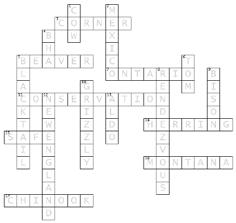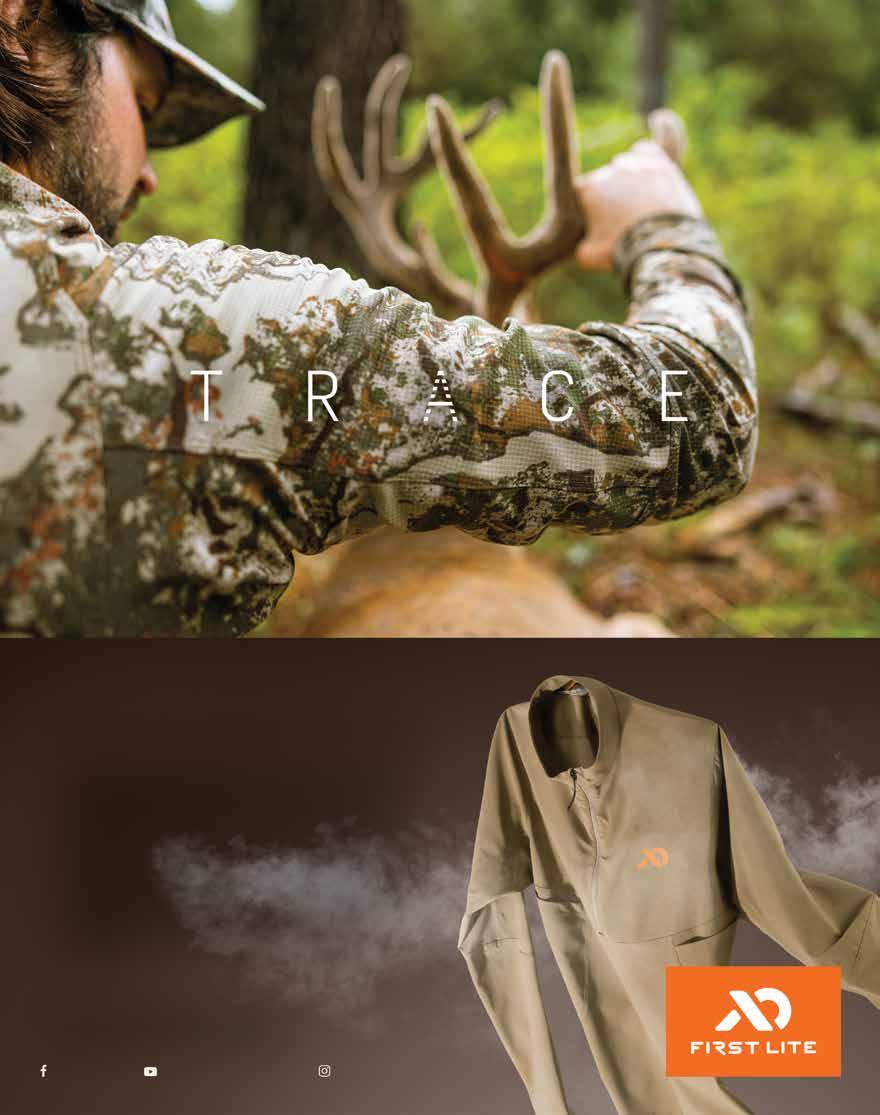BACKCOUNTRY JOURNAL







Hunting and fishing often provide the ultimate escape from the rest of our responsibilities. But sometimes we must step into this part of our lives from another angle, moving from gleeful participant to determined advocate. It’s a requirement of giving a damn, even when it’s inconvenient.
So, I am stepping into this message from another angle. I had fully intended to write this first column as the new president and CEO of BHA about something else entirely, perhaps an introduction of how I found my way to this inspiring role. But that will have to wait. Because the public wildlife grab of our generation is on, and Backcountry Hunters & Anglers has a key role to play.
There is a growing trend across the country to undermine over a century of successful wildlife management built on a foundation of sound, peer-reviewed science. Along with nefarious tactics of special interests to subvert – and even manipulate – the spirit and intent of the public trust doctrine that wildlife is managed for all, we are facing an unprecedented threat to our public wildlife resources. These efforts chip away at the very underpinnings and successful conservation outcomes of the North American Model of Wildlife Conservation.
These increasingly common attacks take on a variety of forms: state ballot initiatives that can sabotage effective wildlife conservation, commoditization of fish and wildlife resources, transfer of wildlife jurisdiction to other agencies, privatization of public wildlife resources by special interests, ideologically motivated changes to the composition of state wildlife boards and commissions, and appointments to these bodies of agenda-driven activists with little regard for serving the public interest.
It’s important to identify challenges where they exist – and where they don’t. Anti-hunting and animal rights activists pose the most obvious threat. On the other hand, ranchers, farmers and other private landowners often contribute to successful wildlife management, provide access for hunting and fishing and in many cases can be counted among our friends. But in certain states, however, factions of those groups are also attempting to seize power from state wildlife agencies.
Would you want elk and pronghorn in your state managed by animal rights activists?
Would you want bear hunting seasons decided by a legislature?
Would you want the deer herd managed as a commodity under the jurisdiction of an agricultural agency?
Would you want private landowners to determine how many tags the rest of the public gets to share after they’re done taking a handful?
All of these nightmare scenarios have already happened, are currently in motion or can be seen threatening on the horizon. It’s

not just the twisted and selfish view of wildlife by special interests that’s so damn galling. It’s the result. Chipping away at hunting and fishing opportunities will ultimately lead to a cascade of either unintended or ill-intended consequences.
As the readers of these pages know from education, experience or just gut instinct, hunting is conservation. Through the sustainable and scientifically guided harvest of wildlife, hunters help maintain the ecological and social carrying capacity of diverse wildlife populations at a landscape scale.
As a larger community of hunters and anglers, we contribute the vast majority of conservation funding, provide critical onthe-ground knowledge to resource managers and often rely on sustainably harvested game as an important food source. For many families, the deer in the freezer is how they get through the winter. The efforts to subvert sound fish and wildlife management not only cuts hunters out of our own conservation legacy and how we provide for our families, but it also ultimately compromises the integrity of the natural systems that support all wildlife.
It’s important to acknowledge this challenge is not new in many states. Some BHA chapters have been navigating these challenges for years, sometimes supported by the contributions of peer organizations and trade groups along the way. As BHA chapters across the country face the unprecedented elevation of attacks on the effective management of public wildlife resources, unifying our collective efforts into an organization-wide initiative is paramount. This clearly has become a national issue.
BHA has a history steeped in giving a damn, and an impressive attendance record when it matters. There’s a saying that “the world is run by people who show up,” and when it comes to taking up the mantle as the voice for public lands, waters and wildlife, the BHA faithful show up. It’s time to leverage the full strength of BHA’s distinctive community and culture to ensure the enduring health and shared value of our public wildlife resources.
-Patrick Berry, President & CEO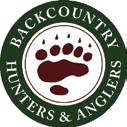
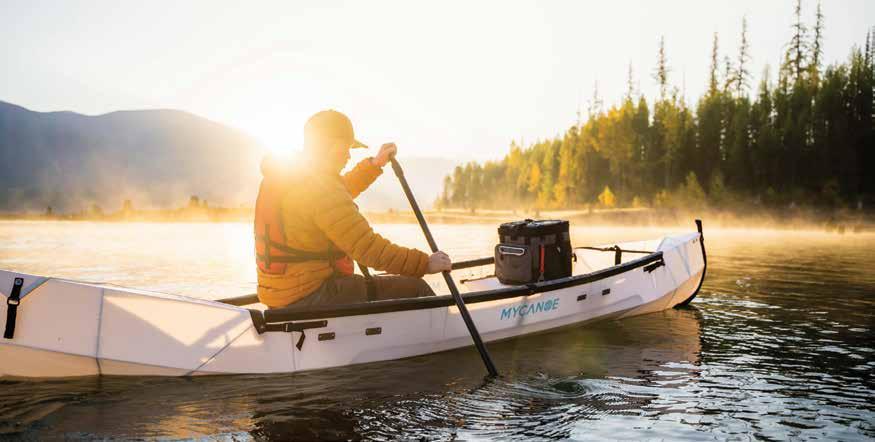
“Look deep into nature, and then you will understand everything better.”
- Albert Einstein
THE VOICE FOR OUR WILD PUBLIC LANDS, WATERS AND WILDLIFE
Ted Koch (Idaho) Chairman
Ryan Callaghan (Montana) Vice Chair
Jeffrey Jones (Alabama) Treasurer
Dr. Keenan Adams (Puerto Rico)
Bill Hanlon (British Columbia)
Patrick Berry, President & CEO
Frankie McBurney Olson, Vice President of Operations
Katie DeLorenzo, Western Field Director
Britney Fregerio, Director of Finance
Chris Hennessey, Eastern Field Director
Dre Arman, Idaho and Nevada Chapter Coordinator
Brian Bird, Chapter Coordinator (NJ, NY, New England)
Chris Borgatti, Eastern Policy and Conservation Manager
Kylee Burleigh, Digital Media Coordinator
Tiffany Cimino, Events and Marketing Coordinator
Trey Curtiss, R3 Coordinator
Kevin Farron, Regional Policy Manager (MT, ND, SD)
Brady Fryberger, Office Manager
Chris Hager, Washington and Oregon Chapter Coordinator
Jim Harrington (Michigan)
Hilary Hutcheson (Montana)
Dr. Christopher L. Jenkins (Georgia)
Katie Morrison (Alberta)
Ray Penny (Oklahoma)
Don Rank (Pennsylvania)
J.R. Young (California)
Michael Beagle (Oregon) President Emeritus
Jameson Hibbs, Chapter Coordinator (MI, IN, OH, KY, WV)
Trevor Hubbs, Armed Forces Initiative Coordinator
Bryan Jones, Chapter Coordinator (CO, WY)
Mary Glaves, Alaska Chapter Coordinator
Kaden McArthur, Goverment Relations Manager
Josh Mills, Conservation Partnership Coordinator
Devin O’Dea, Western Policy and Conservation Manager
Brittany Parker, Habitat Stewardship Coordinator
Thomas Plank, Communications Coordinator
Kylie Schumacher, Chapter Coordinator (MT, ND, SD)
Max Siebert, Operations Coordinator
Joel Weltzien, California Chapter Coordinator
Briant Wiles, Colorado Habitat Stewardship Coordinator
Zack Williams, Backcountry Journal Editor
Interns: Robert DeSoto, Sylvie Poore, Harrison Stasik, Taigen Worthington
Andrew Hahne, Habitat Stewardship Coordinator (MT, ID, WY)
Aaron Hebeisen, Chapter Coordinator (MN, WI, IA, IL, MO)
Josh Bent, Charlie Booher, Travis Bradford, Maya Brodkey, Mandy Carlstrom, William Dark Photography, Jan E. Dizard, Corey Ellis, Dwayne Estes, Dr. Pete Eyheralde, PhD, Jeremy French, Paul Keevan, J.J. Laberge, Jordan Lefler, Willis Mattison, Dave Quinn, B.B. Sanders, E. Donnall “Don” Thomas Jr., Lori Thomas, Geneviève Joëlle Villamizar, Chuck Way, Ned Weidner, Theo Witsell, Briant Wiles


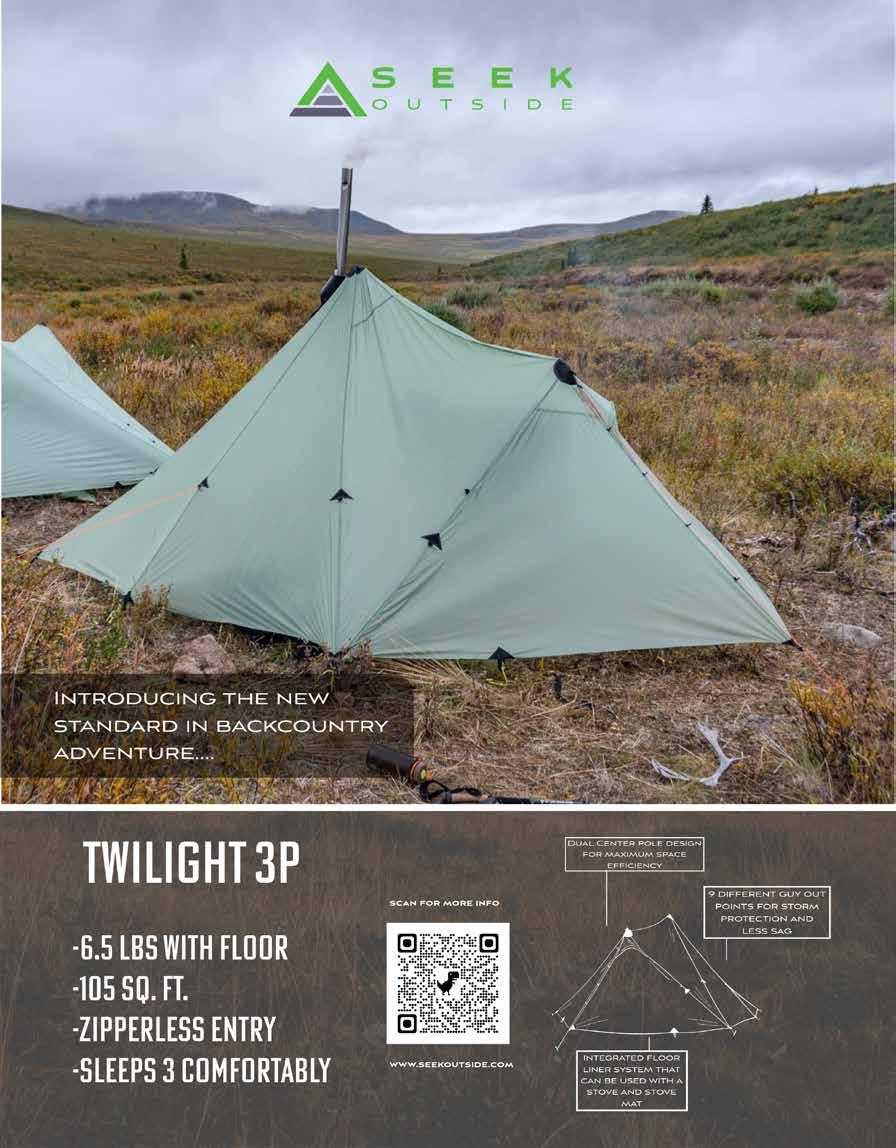

“As you approach … from the east, there opens unexpectedly to view an extensive prairie, which contains several thousand acres, and which appears to be without a single tree, or fence, except now and then a small cluster of trees at great distances, like the little islands of a sea. Casting your eye over the prairie, you discover here and there, herds of cattle, and horses and wild deer, all grazing and happy … The grass, which soon will be 8 feet high, is now about 8 inches, and has all the freshness of spring. … The oak … with the sycamore and mulberry, borders the prairie on all sides. Flowers of red, purple, yellow and indeed of every hue, are scattered, by a bountiful God, in rich profusion.” -William Goodell, 1822, Alabama-Mississippi Border.
Close your eyes and imagine for a moment that you were one of the first explorers to step foot in the southeastern United States or one of the first long hunters to cross the Cumberland Gap in search of game. Imagine the smells, sights, sounds, animals, and ecosystems. What did you imagine? Did you imagine traipsing through oldgrowth forests of giant trees and vast expanses of forested wetlands? If so, you may have fallen victim to one of my least favorite myths.
People all across the country are taught the same old tall tale while growing up, what I affectionately refer to as “the myth of the squirrel.” The story goes something like this: Before European settlement, the entire southeastern United States was a rich, dense, old-growth forest. This forest was so vast that a motivated squirrel could theoretically go through the treetops from the Atlantic Ocean to the Mississippi River without ever touching the ground. This tale paints visions of deep, dark forests of towering trees, big squirrels, giant tulip poplars and mosses. But this myth is exactly that – a myth! The idea that the southeastern United States was and should be one vast deciduous forest is simply incorrect, unsupported by both science and the facts of American history. In fact, it is believed that only 40% of the southeastern landscape was made up of closed canopy forests.
So, what was the other 60%? It was the Southern Serengeti.
Millions of acres of savannas, open woodlands, prairies, canebrakes, glades, marshes and barrens made up this complex and biodiverse mosaic of grassland and open woodland ecosystem which depended on fire, bison grazing and elk browsing. These ecosystems were also home to numerous Tribes that relied on them for foraging, hunting, fishing and agriculture. The grasslands were so vital to Indigenous life that Tribes often used prescribed fire to help maintain the grassy components of the mosaic.
It is another common misconception that these ecosystems are characterized as “early successional habitats.” Many of our southeastern grasslands have been open and evolving since the Miocene Epoch – between 23 million and 6 million years ago – to form some of the most complex and biodiverse ecosystems in the world. Many were old-growth grasslands that took millennia to assemble.
It is important to note that while savannas, woodlands and forests are all ecosystems with trees, savannas and open woodlands are very different from forests.
Forests are shaped by closed canopies and moist soils. This creates a moist, low-light environment often dominated by spring ephemeral wildflowers, shade-loving shrubs, mosses and more.
Savannas and open woodlands have fewer trees, with an open understory that is dominated by sun-loving grasses and wildflowers.
“The Southern Grassland Biome, when it is properly defined to include the longleaf pine savanna and its intermittent hardwood bottomlands, is probably the richest terrestrial biome in all of North America. To understand, cherish and preserve the great natural heritage of the Southern Grassland Biome should be a priority goal in America’s environmental movement.”
- E.O Wilson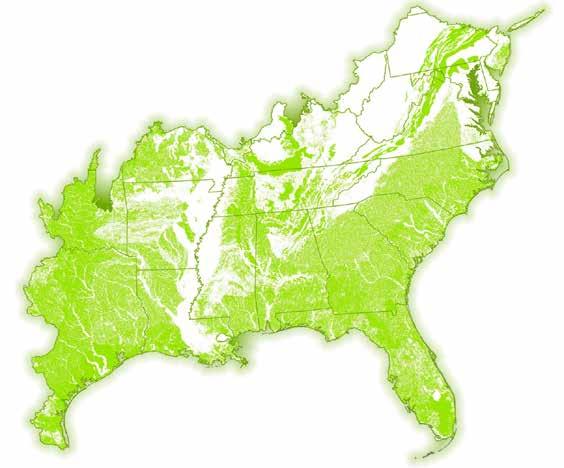
A map of the Southeastern Grassland Institute focal region produced by NatureServe and SGI depicting areas that had a significant grassland and open grassy woodland component historically (green) and areas that were mostly forested (white).
These were likely the most common ecosystems across the Southeast, ranging from the longleaf pine-wiregrass savannas of the Atlantic Coastal Plain, to the oak-pine savannas of the Gulf Coastal Plain, to the oak-dominated savannas of the Interior Plateaus. They are also among the richest terrestrial ecosystems in North America. This assemblage of over 200 million acres of savannas and open grassy woodlands in the Southeast created a biodiversity hotspot. Every aspect of life in the Southeast was impacted by these ecosystems, whether you were an Indigenous person, early settler, long hunter or just a mussel in a creek bed.
In addition to expansive “wooded grasslands,” the Southeast had about 20 million acres of prairies – nearly treeless, rolling plains dominated by wildflowers and grasses. Some prairies had small clusters of trees here and there, along with embedded wetland marshes, ponds and seeps, which supported entirely different species of plants and animals than the drier uplands. The prairies of the Southeast were once home to roaming herds of bison, elk and deer, prairie chickens, bobwhite quail and even waterfowl like sandhill cranes, whooping cranes and all manner of ducks.
Pennyroyal Plain was one of the largest prairies east of the Mississippi – over 3 million acres in modern-day Kentucky and Tennessee. This once-vast prairie is believed to be how Kentucky got its name. (The word “Kentucky” is likely derived from the Indigenous word “kentake,” meaning “big meadows” or “meadowlands.”) The Pennyroyal was also covered in sinkhole pond marshes due to the karst limestone geology beneath it, and these wetlands undoubtedly served as magnets not only for pioneers crossing the inhospitable prairie but also for migrating waterfowl. (Sadly, of the many prairie
sinkhole ponds in the Pennyroyal Plain, we currently know of just one that still exists in an intact prairie.)
In addition to the Pennyroyal and other large grasslands in Kentucky, there were many other prairies in the Southeast: the Black Belt Prairies of Alabama and Mississippi, which formed an archipelago of prairies in a sea of savannas and woodlands; the enigmatic Piedmont Prairies east of the Appalachian Mountains, which stretched across parts of the Carolinas, Virginia, Maryland and southeastern Pennsylvania; the Cajun Prairies of southern Louisiana; the Blackland Prairies of Texas; the Grand Prairie of Arkansas, sweeping prairies of the Everglades; and even prairies on Long Island, which were once home to the now extinct heath hen.
In addition to prairies, savannas and woodlands, the Southeast had hundreds of thousands of acres of canebrakes. Canebrakes are grasslands that consist almost entirely of our native bamboo species called cane. They historically dominated many riparian zones across the Southeast. These dense groves were critical habitats for many animal species, like the extinct Carolina parakeet, black bears and bison, which also ate the cane. Cane seeds would have fed species like passenger pigeons when they produced millions of seeds at once following mass flowering. Canebrakes were and are still significant to Indigenous people, being used for everything from baskets to weapons and food. The canebrakes of the Southeast were often derided by early settlers because of how thick and tough to travel through they were, and because horses would often gorge themselves on the cane and become ill.

In addition to the landscape-scale grasslands, the Southeast is also home to a variety of glades and barrens – smaller grasslands formed on thin, rocky or chemically extreme soils. Glades are usually flat with exposed bedrock at the surface and very shallow soils. They have distinct wet and dry seasons, with wetland conditions often present in the winter and spring but very dry, desert-like conditions in the summer and early fall. This creates unique habitats with a high concentration of endemic species that occur in particular types of glades and nowhere else in the world. Barrens are similar to glades but have somewhat deeper soil and often occur on slopes. These harsh ecosystems often occur together in complexes and support desert-adapted flora like prickly-pear cactus, yucca and succulent plants like widow’s cross and rock pinks, along with animals like tarantulas, scorpions and rattlesnakes. Some of the highest concentrations of glades and barrens are in the Nashville Basin of central Tennessee and the Ozarks of Missouri and Arkansas. Sadly, the majority of glades and barrens have been degraded by littering, development, fire suppression and encroachment by woody plants like eastern red cedar. (The cedars are a natural component of the ecosystems but were much less common before the widespread grassland degradation, habitat fragmentation and fire suppression that followed settlement.)
Countless species inhabited and shaped the southeastern grasslands. Most of these species have declined or been extirpated entire-
ly from the region– species like red wolves, mountain lions, bison, beavers, elk, and prairie chickens.
Millions of bison and elk used to roam the region side by sideThese two iconic species that today bring to mind pictures of the West were once a staple of the southeastern grasslands and played a large role in the ecology of the region. In addition to these icons, beavers played an integral role by damming rivers, flooding riparian zones and creating lush wet meadows dominated by sedges and wildflowers. The Southeast also supported multiple species of prairie chickens, including the heath hen, which lived in grasslands on Long Island’s Hempstead Plains until its extinction in 1932. The greater prairie chicken was once common in the Pennyroyal Plain of central Kentucky but was eradicated around the 1810s.
I would like to say that we have learned our lesson from these losses and that grassland species are no longer declining. But even today we are watching as beloved species like bobwhite quail are rapidly declining due to habitat degradation. Grassland birds as a whole are in freefall, with estimates of a 53% decline since 1970. That’s a decline of 720 million birds in 50 years. Pollinators, likewise, are in steep decline with the American bumble bee now missing from multiple states.
The grasslands described above are some of the most endangered ecosystems in North America with 0-5% remaining, depending on the type and region.
How could the existence of such vast grasslands, so rich with history, wildlife and game, not be common knowledge?
Sadly, their decline began early, almost immediately following European contact, as early as 1700 in eastern coastal states. The wave of grassland loss from east to west across the Southeast tells a story similar to that of the American bison and passenger pigeon – even things we think are inexhaustible resources can disappear before we even realize they are disappearing.
The decline of grasslands in the East can be attributed to a few primary drivers. First, fire was removed from the landscape. Second, large grazers and browsers such as elk and bison were extirpated from the region. Third, open lands were the first areas to be converted to crops, improved for pastures and covered by towns.
These changes led to savannas changing to closed-canopied unhealthy forests dominated by mesic species. Post oaks, shortleaf pines and blackjack oaks were shaded in and, in some cases, replaced by species such as maples, sweetgums and cedars. These mesic species, which can’t tolerate fire, shaded the understory, depositing dense leaf litter that not only covers and chokes out all the wildflowers but also holds in moisture, making it harder for natural fire to return. Couple this with the removal of large mammals like elk and bison, which would have kept shrubs and saplings at bay by grazing and browsing, and by the 20th century, our once beautiful savanna-woodland communities were degraded to closed canopy second-growth forest.
The degradation and disappearance of prairies is different than that of the savanna but just as devastating. The vast majority of the prairies of the Southeast have been plowed under and turned into crop fields. The more arable lands were converted into what is now cotton, corn and soybeans, or similar crops. This is the case for places like the Pennyroyal Plain of Kentucky, the Loess Plains of Tennessee and the Black Belt Prairies of Alabama and Mississippi.
This same story can be told across the South. The agricultural industry was built on top of prairies. In addition to the plowing of the prairies, we saw the conversion of our bison and beaver-maintained lush meadows converted to non-native Eurasian pastures dominated by detrimental grasses like fescue. The prairies, savannas and woodlands that Daniel Boone once hunted were destroyed. Only tiny fragments remain with a few people and organizations trying to restore them.
“The physical features of Washington County have undergone a very decided change in the last sixty years. When the pioneers first made it their home there were large areas of prairie which are now covered with a more or less dense growth of timber. The site of Fayetteville and several of the surrounding elevations, as well as the intervening valleys, were bare of timber, and were covered with a luxuriant growth of grasses, which afforded excellent pasturage for buffaloes and other herbivorous animals.”
-History of Washington County Arkansas, 1889
These grasslands are at the very core of what it means to be from the Southeast, yet their place in American history has largely been forgotten. Because these grasslands began disappearing before the United States ever became a country, many Americans don’t realize the impacts they had on the patterns of human migration and settlement in the region.

For example, let’s take the booming city of Nashville, Tennessee –full of giant skyscrapers, tour buses and bars. Every day thousands of people commute in and out of the city and have no idea that the reason Nashville exists is that before it was known as Nashville it was known as French Lick. Bison, elk and deer would congregate to lick the natural mineral deposits and graze the rich meadows and savannas. The highway system surrounding Nashville was built upon old bison trails leading to and from French Lick in modern-day downtown Nashville. Stories like this play out all over the Southeast.
The longleaf and shortleaf pine trees that built the South were foundational pieces of the region’s savannas and woodlands. The lumber from these trees can be found in many historic buildings and historic ships. The resinous sap of these trees was processed into turpentine, pitch and tar, which were used for waterproofing wood and many other applications of shipbuilding vital to the economy and the American Navy during the early settlement period. These trees, which require fire and open stand structure to thrive, shaped the very settlement and economy of the southeastern United States.
Whether you are a sportsman or sportswoman, a bird watcher, a researcher or just a conservationist at heart, grassland conservation in the Southeast is one of the most important fights in our lifetime. When we talk about restoring species like elk in the Southeast, declining bobwhite quail numbers or declining wild turkey numbers, we are only hinting at the true problem: the loss of grassland and open woodland species of which 99% of the grasslands are gone.
If we want our children’s children to have the opportunity to go afield and enjoy not only these wild places but the creatures that inhabit them, the first step is to acknowledge the existence of the southeastern grasslands. The second step is to decide as a community that we have seen enough loss and step in and save these special ecosystems.
Currently across the Southeast, we are watching as the last precious remnants of the grasslands, the seed sources needed to restore large areas of these habitats, are disappearing forever. We are watching as seed and rootstock banks of keystone wildflowers die under heavy leaf litter, prairies are plowed under and glades are developed. The chances to turn back the tide of grassland loss are diminishing by the day.
But we have an opportunity to have one of those rare moments in conservation history – where we decide to save something before it’s too late. Sportsmen and sportswomen saved species like whitetail deer, wild turkeys, sandhill cranes and more. Here we have an opportunity to decide to save grasslands in the Southeast. The good news is that currently, seed sources still exist, savannas can be revived by fire and selective tree removal, and the remnants that still exist can be used to replant millions of acres. If we act strategically, elk could again roam expansive savannas, deer can bound through plentiful prairies, and we can enjoy the whistle of bobs and the thunder of turkeys on a spring day. It starts with a decision to save Southeastern Grasslands.
Jeremy French is the director of stewardship at the Southeastern Grasslands Institute and an ecologist, author, historian and avid outdoorsman and wilderness explorer. He spends most of his time working but enjoys wilderness trips, hunting, fishing, botanizing, wandering and rockhounding when not working to conserve biodiversity.
If you want to learn more about saving the Southern Serengeti visit www.segrasslands.org and follow The Southeastern Grassland Institute on social media.

“The
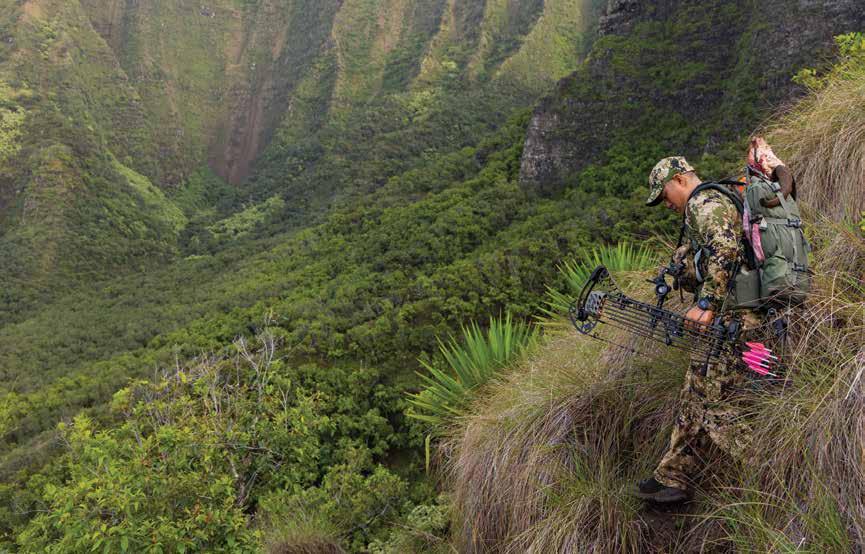

 buffaloes were more frequent than I have seen cattle in the settlements, browsing on the leaves of cane, or cropping the herbage of those extensive plains.” -Daniel Boone, 1775, Kentucky (Photo: Dr. Pete Eyheralde, PhD)
buffaloes were more frequent than I have seen cattle in the settlements, browsing on the leaves of cane, or cropping the herbage of those extensive plains.” -Daniel Boone, 1775, Kentucky (Photo: Dr. Pete Eyheralde, PhD)

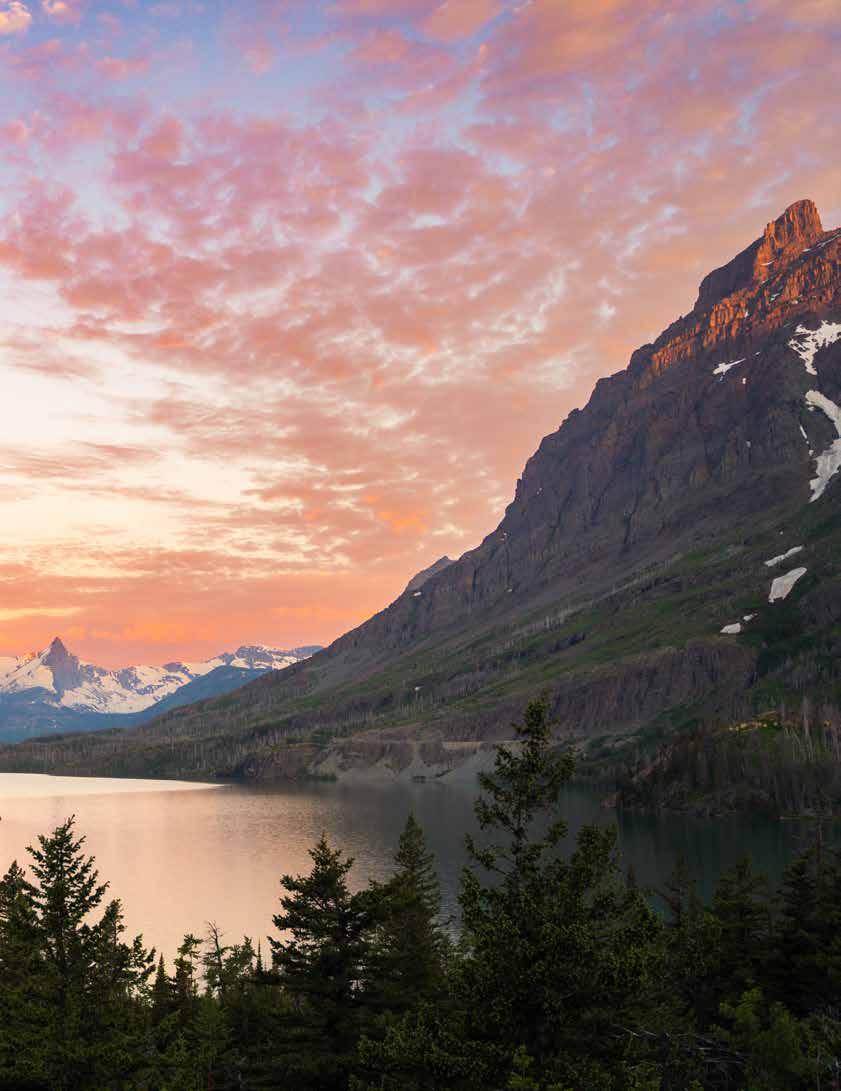
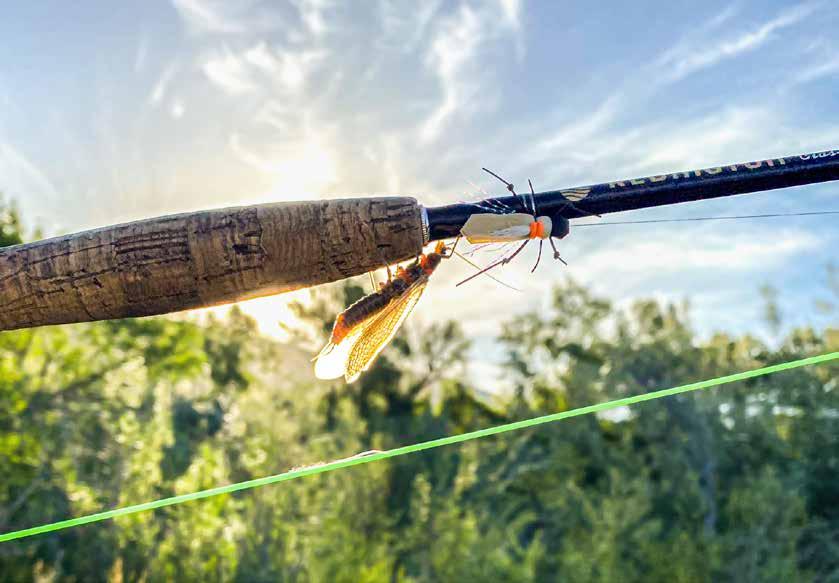
As the leading voice for the protection of public lands, waters, and wildlife, Backcountry Hunters & Anglers shared its support for the Public Lands in Public Hands Act, a bill that would help protect publicly-owned land from privatization. Introduced in February in the U.S. House of Representatives by Reps. Ryan Zinke (R-MT) and Gabe Vasquez (D-NM), this bipartisan legislation recognizes the irreplaceable value that public lands have for hunters and anglers.
The Public Lands in Public Hands Act would require congressional approval for the sale or transfer of publicly accessible tracts of federal land greater than 300 acres, or greater than five acres if accessible by public waterway. This is a critical improvement from current law in which federal land management agencies have broad discretion to sell or transfer publicly owned parcels that provide valuable habitat, public access and recreational opportunities. Limiting lands previously identified for disposal by the Department of the Interior and U.S. Forest Service will greatly reduce the threat of privatization for valuable public resources owned by all Americans.
“Core to the BHA mission is the sanctity of public lands and waters, resources cherished by hunters, anglers and outdoor enthusiasts, and valued as an irreplaceable part of our natural heritage. Without publicly accessible places to recreate, many Americans who share a love for hunting and fishing would be excluded from the opportunity to pursue their passion,” said Patrick Berry, BHA’s President and CEO. “We thank Reps. Zinke and Vasquez for introducing the Public Lands in Public Hands Act, which would help to ensure our hunting and angling traditions can continue for future generations.”

The Conservation History of George Washington Carver: Join Hal Herring and Mississippi State University environmental history professor and author of My Work is that of Conservation, An Environmental Biography of George Washington Carver Mark Hersey for a fantastic American conservation story that has never been more relevant than it is right now.
Carver was also one of America’s pioneers of the science of ecology and a cutting-edge conservationist who advocated for the restoration of whitetail deer, quail and fisheries, long before such ideas became mainstream. His conservation vision was forged in the fire of his own history and in his life’s work in Alabama’s post-slavery Black Belt and along the Fall Line, known then as “the most destroyed land in all of the South,” a place where poverty, injustice and hunger were closely tied to the abuse and collapse of the systems of the earth.
Don’t miss Hal’s fascinating conversation with Mark Hersey (episode 171) and more on the BHA Podcast & Blast wherever you get your podcasts.
Brian’s first experience with the value of public land access was while earning his doctorate degree in geology from Western Michigan University. Although trapped in a small apartment, Michigan has abundant public land, and he was able to pursue deer and turkeys and expand his fishing to include Great Lakes salmon and steelhead.

Brian, along with his wife and daughter and pup, lives on a small homestead in Whitehall, New York, situated between the southeastern edge of the Adirondack Mountains and the Green Mountains of Vermont, right at southern tip of Lake Champlain with access to thousands of acres of public land and water.
Kylee was born and raised in Hells Canyon. From the second she was able, she was learning to hunt, forage and fish. She obtained her bachelor’s degree from Eastern Washington University in communications/public relations and has spent her career primarily providing communication services.

Kylee currently resides in central Washington with her husband, twin baby girls and black Lab, Bristol. When she’s not behind the computer or wrangling the twins, she’s spending as much time as possible outdoors, which includes frequent treks back to Hells Canyon and the Blue Mountains. Her passion for ancestorial living, wild places and accessibility for all led her to BHA.
As a youngster, Andrew ran wild around military installations from the desert landscapes of Camp Pendleton to the intercoastal waterways of Lejeune. Over the years, he continued to fish, became an avid shooter and hunted whitetails along the East Coast.
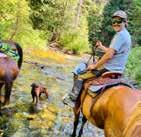
Andrew moved to Montana in 2021, interned with BHA and now works full time in the conservation space. He spends his fall trying to fill the freezer with big game so that he can get back to the duck blind with his chocolate Lab, Lynyrd. He strives to be a good steward of the public lands and waters he feels blessed to make use of.
Max Siebert grew up in Missoula, Montana. After working a few jobs out of state, Max missed the mountains, family and friends in Montana and moved back (to a rented room in a house where he had the good fortune to meet his future wife).

When he’s not at work, you’re sure to find Max on one of his many bicycles, hiking, studying maps and conjuring his next backcountry adventure or lounging in a canoe with a packed cooler and a fishing rod. Max hopes that working with BHA will enable him to give back to the wild places that have raised and nurtured him.
CALIFORNIA CHAPTER COORDINATOR
Joel grew up in a small town in southwest Montana, where his father taught him to hike, backpack and “be” in natural spaces.
After undergrad, Joel attended the University of Michigan’s School for the Environment and Sustainability, earning an M.S. in environmental policy.
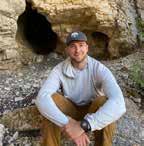
After finishing his masters in the spring of 2023, Joel moved with his wife to Berkeley, where she began attending law school last autumn. While he loves to hunt and fish, he’s terrible at both activities and hopes to learn as much as possible in the coming years!
CO HABITAT STEWARDSHIP COORDINATOR
Briant’s journey began in Wyoming, where hunting and fishing were woven into the fabric of his family life. The desire to be more involved with conservation brought him to Gunnison, Colorado, where he was awarded a fellowship and completed a Master of Environmental Management. He developed a deep passion for public lands and wildlife from years spent outdoors in the mountains and high deserts. Working with BHA, Briant has poured his sweat into fence removal and modifications and knows the impact fences have on wildlife.

Here are the winners of the kid’s coloring contest from the winter issue. (We had a record number of entries and couldn’t choose just three.) Thanks to all who participated!


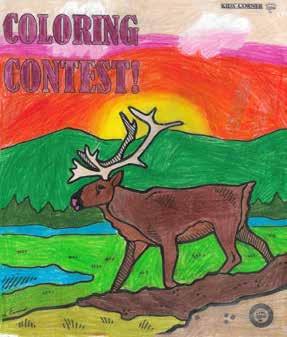





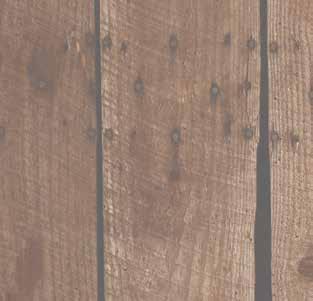

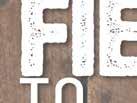




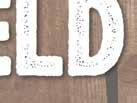
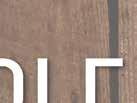










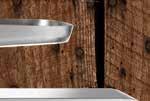







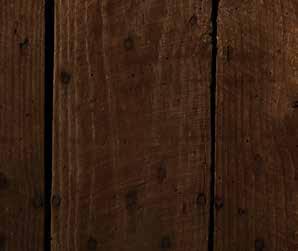
I am a BHA member because I truly believe it is an organization that can make a positive impact and difference toward perpetuating the health of our land and the opportunities that reside there.
YOU’VE PUT A LOT OF EFFORT INTO LEVELING UP THE WASHINGTON CHAPTER’S COMMUNICATIONS AND OUTREACH. WHAT ARE YOUR GOALS WITH THIS WORK? AND HOW ARE YOU GOING ABOUT IT?
Before I joined the board, I was getting a glimpse into what BHA was doing in Washington through a friend and now fellow board member. From the outside though, it was hard to tell what was happening and what the board was taking action on. My goal when taking the “communications lead” was to better share and highlight all that this board and chapter does in this state. From land access to conservation and policy work, to public education and so much more. In sharing all of these things with not only the BHA members in Washington but also the general population, I hope to help build a strong community of people who will continue to fight for habitat and wildlife for years to come.
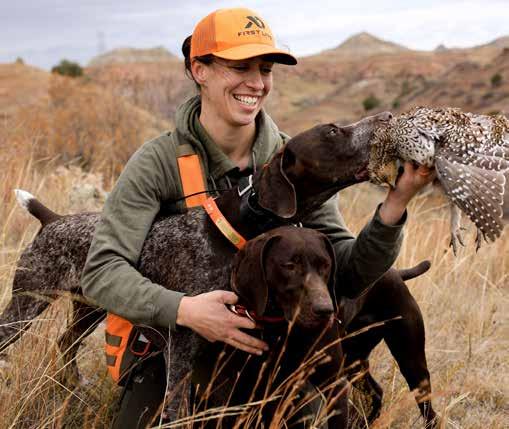
WHY ARE PUBLIC LANDS AND HUNTING AND ANGLING SO IMPORTANT TO YOU?
YOU ARE PASSIONATE ABOUT HOW HUNTING IS PORTRAYED IN THE MEDIA. WHAT DO YOU SEE AS THE IMAGE PROBLEM WITH HUNTING? AND HOW CAN HUNTERS WORK TO CHANGE THAT?
Although I grew up enjoying the outdoors and fishing with my family, I had never experienced hunting more than through the Outdoor Channel, where you’d see highlight reels of people shooting large bucks, high-fiving, and then moving to the next scene.
It wasn’t until I was able to see all the dots connected between the prehunt prep, in-hunt trials and tribulations and post-hunt victories of wild game dinners or experiences and lessons learned from “unsuccessful” outings, that I cared enough to take a step toward it all.
To me, that is a big issue the hunting community is struggling with. Photos and videos are shared without any explanation, in a world where impressions are made through 10-second videos and pictures – without a story. If a hunter or angler looks at a photo of a smiling person with their “trophy,” they can imagine the story behind it and the meals in front of it. But to anyone and everyone else who now has access to that content – what will they see?
While it might not seem fair, it is quickly becoming our job to share the why and help those who don’t participate in the lifestyle of a hunter or angler understand why we care so deeply about it all, and why they should too.
When people care or have personal investment, they are exponentially more likely to engage. In a time where we need all the educated, caring advocates we can get, a simple explanation can go for miles and years.
Through hunting and fishing on public lands, I have been able to discover who I am. I’ve learned that I am capable of doing “hard things,” whether that’s hanging in a tree saddle for days on end or pushing myself past my comfort zone to stay in that prime hunting zone until shooting light is over, leaving a long solo walk back to the truck in the dark. The experiences I have in the field in pursuit of wild game have always translated to out-ofthe-field life lessons. These opportunities are there for anyone who wants to jump in and try. Better yet, these opportunities are regenerative and should be around for generations to come.
WHAT DOES YOUR PERFECT DAY LOOK LIKE ON PUBLIC LANDS AND WATERS?
My perfect day in the field takes place in the middle of each September with a bow in my hand, chasing elk through the woods. Although I have yet to harvest an elk, chasing them is where I fell in love with the opportunities and challenges our lands hold. Feeling the rumble of a bull scream in the center of my chest while in the middle of a rut frenzy and smelling that warm not-quite barnyard but close scent is what made me take the last step and dive into this world of wild game pursuit and conservation. For that reason alone, it will forever be my favorite time in the field.
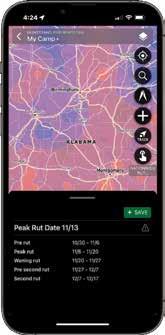
WHITETAIL RUT MAP
Unlock the most extensive Rut Map in the country

WHITETAIL ACTIVITY FORECAST
Plan your hunt around peak movement times
Join millions of hunters who use HuntStand to view property lines, find public hunting land, and manage their hunting property. Enjoy a powerful collection of maps and tools — including nationwide rut dates and a 7-day whitetail activity forecast with peak deer movement times.
NATIONWIDE PROPERTY INFO

WHITETAIL ACTIVITY FORECAST
Download and map for FREE!
WHITETAIL RUT MAP
MONTHLY SATELLITE IMAGERY
huntstand.com
WHITETAIL HABITAT MAP CROP HISTORY
NATIONAL AERIAL IMAGERY



BHA’s Backcountry Bounty is a celebration not of antler size but of BHA’s values: wild places, hard work, fair chase and wild-harvested food. Send your submissions to williams@backcountryhunters.org or share your photos with us by using #backcountryhuntersandanglers on social media! Emailed bounty submissions may also appear on social media.
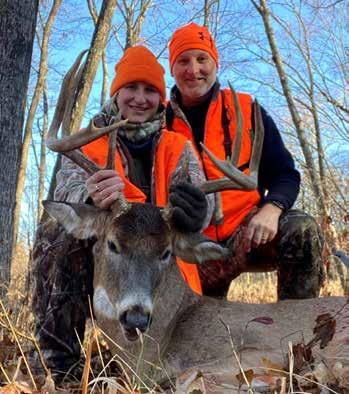



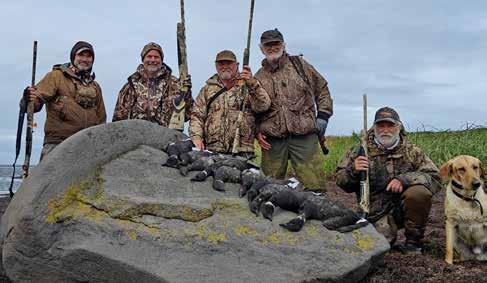



Puzzlemaker is a puzzle generation tool for teachers, students and parents. Create and print customized word sea more-using your own word lists
Crossword

ACROSS
ACROSS
3. _____ crossing – from one piece of public land to another
5. Canada’s national animal
DOWN
1. female moose or elk
3. _____ crossing – from one piece of public land to another
7. smallest Great Lake (by surface area)
11. prevention of wasteful use of a resource
5. Canada’s national animal
2. Gulf of __________
4. nickname for Backcountry Hunters & Anglers
5. deer that lives in the temperate rainforest of the West Coast
14. last name of host of the Backcountry Hunters & Anglers Podcast & Blast, also a small fish
7. smallest Great Lake (by surface area)
15. guns should always be pointed in a ______ direction
11. prevention of wasteful use of a resource
16. state where Backcountry Hunters & Anglers is headquartered
17. a warm dry wind that blows down the east side of the Rocky Mountains at the end of winter or a large North Pacific salmon
6. male turkey
8. a meeting at an agreed time and place, typically between two people
9. United States national mammal
10. animal whose paw appears in BHA logo
12. farthest east BHA chapter
14. last name of host of the Backcountry Hunters & Anglers Podcast & Blast, also a small sh
15. guns should always be pointed in a ______ direction
13. father of wildlife conservation: _________ Leopold
16. state where Backcountry Hunters & Anglers is headquar tered
*answers on page 83
17. a warm dry wind that blows down the east side of the Rocky Mountains at the end of winter or a lar
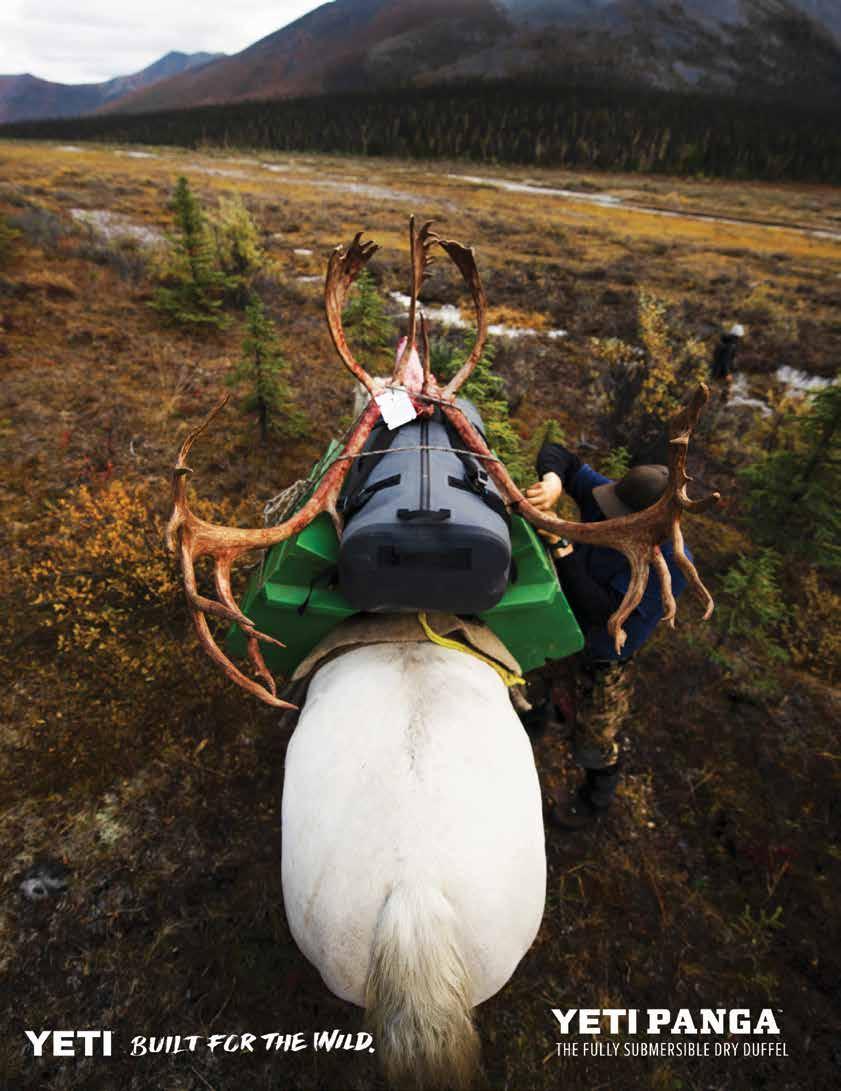

Fences continue to come down across the West thanks to BHA staff and volunteers as BHA expands its stewardship work
BY BRIANT WILESThe short, stout, sharp barbs, positioned approximately every foot on the braided wire, eagerly clutch at anything that comes their way. An iconic Western symbol, as familiar as the cowboy hat and horse, the miles of barbed wire that traverse Gunnison country are starting to come out. This welcome development is a relief for wildlife, signaling a shift in land ethic, which aims to be more inclusive of all range users — a shared cause championed by both land management agencies and conservationists.
Any given weekday during the summer and fall of 2023, my black Toyota could be seen bouncing down a dusty road, filled with fencing tools and supplies, thanks to a partnership between BHA and the Bureau of Land Management.
As a Gunnison resident and a lifelong hunter and angler, a deep connection and commitment to the conservation and enhancement of our public lands drove me to sign up for a summer of cuts and scrapes wrestling barbed wire fencing for BHA and the BLM.
The partnership between BHA and the BLM was spearheaded by BHA Habitat Stewardship Coordinator Brittany Parker, who worked closely with BLM Gunnison Wildlife Biologist Kathy Brodhead and BLM Gunnison Ecologist Rachel Miller. Both BLM staff had received project funding for fence removal, maintenance and inventory and needed help getting boots on the ground to do the work.
“Backcountry Hunters & Anglers was the perfect partner to
accept these funds and tackle the work,” Miller said of the project. “BHA has a national assistance agreement with BLM, making funding the project simple.”
The result was the removal of nearly three miles of fence, repair reconstruction of over two miles of fence and inventory of over 10 miles for potential wildlife conflicts.
Using GPS coordinates, I navigated the backcountry two-tracks. Over 18 weeks, I visited and worked on 28 different sites scattered around the Gunnison Basin. The projects were primarily focused on riparian exclosures put up decades ago, designed to fence out livestock from sensitive wet zones in otherwise dry areas. They ranged in size from a few dozen yards to over a mile in length.
Thirteen of the sites were slated for removal, put in at a time when more was expected from the wet areas. Now, in various states of disrepair, they are little more than a hazard to livestock and wildlife. Seeing those fences go offered instant satisfaction and validation that the work I was doing was impactful and important. The removal of more than 15,000 feet of fence from the landscape will prevent unnecessary wildlife deaths and contribute to healthier ecosystems.
In addition to removing the unwanted exclosures, there were a slate of projects aimed at rehabilitation. These wet meadow exclosures still serve a valuable function of protecting a sensitive area from livstock grazing and therefore prove alluring to wildlife. Upwards of 80% of terrestrial species utilize these riparian zones at one point in their life cycles. The high primary productivity of the
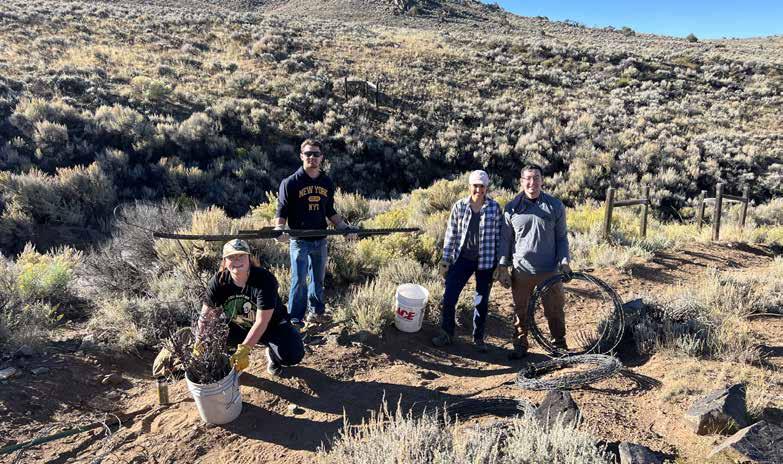
plants in these areas makes them desirable to migrating elk, deer and antelope. They also provide critical habitat for the threatened Gunnison sage grouse.
But fences are by design not wildlife friendly. The goal then becomes to make them, as Parker puts it, “wildlife friendlier.” By following Colorado Parks and Wildlife’s recommendations, I replaced the top and bottom wires with smooth wire, adjusted the spacing of the wires, and used wood fence stays and flagging for better visibility. The key is to make a fence stand out by replacing the old wire stays with wood and then attaching flagging, so the fence has a bigger presence making it easier for wildlife to see the wires. The wood stays also help the fence keep its shape by not bending under snow load. Removing the old riparian exclosure fences was relatively quick and straightforward compared to the much slower tasks of rebuilding old fences, where I spent upwards of four weeks on a single exclosure.
While I spent most of the summer carrying out this work alone, I was please to be joined at the tail end of the field season by Ali Aldrich, a master’s student at nearby Western State University. Together we tackled one of the bigger fence projects.
The maintenance of the exclosures was not limited to rebuilding wire fences. On a site 15 miles south of the city of Gunnison, Aldrich and I joined crews from the Upper Gunnison River Water Conservation District, BLM and Colorado Parks and Wildlife to construct an exclosure with a new type of metal fence. I had removed the old barbed-wire fence earlier in the year and was excited to see the new style in action. The new wildlife-friendlier fence, a unique freestanding metal arrangement of A-shaped posts and metal rails, went up in a single day.
At other times Aldrich and I were joined by groups of volunteers
from the local community who contributed significant time removing and repairing old fences. A particularly difficult job of carrying the cumbersome wire and heavy posts more than a quarter mile to a road demonstrated how invested this group of community volunteers is in their public lands.
Of course, the passion of BHA members and the Gunnison community is not new. This past spring BHA organized an event called Beer, Bands and Barbed Wire Strands with live music, camping and over 100 volunteers working to remove miles of fence.
In a recent Gunnison Country Times article, Colorado Parks and Wildlife Area Wildlife Manager Brandon Diamond recognized the scale of fencing on public land, the cost to wildlife and the necessity of the work BHA members across the West are undertaking: “When you have an old broken wire that’s on the ground and in a state of disrepair, it’s even less obvious than a well-maintained fence, so both of these can be hard on wildlife, everything from changing migration routes or even daily movement activities.”
The opportunity I was granted through BHA coupled with my local knowledge and tremendous support from the BLM’s Miller and Brodhead, made this collaboration a great success. Putting theory into action is, after all, the point of working on behalf of public lands and wildlife. BHA is excited and uniquely suited to build on the success of the past year.
Briant Wiles is BHA’s Colordado Habitat Stewardship Coordinatior. He lives in Gunnison, where he chases elk, grouse, waterfowl and backcountry trout – all on public lands.
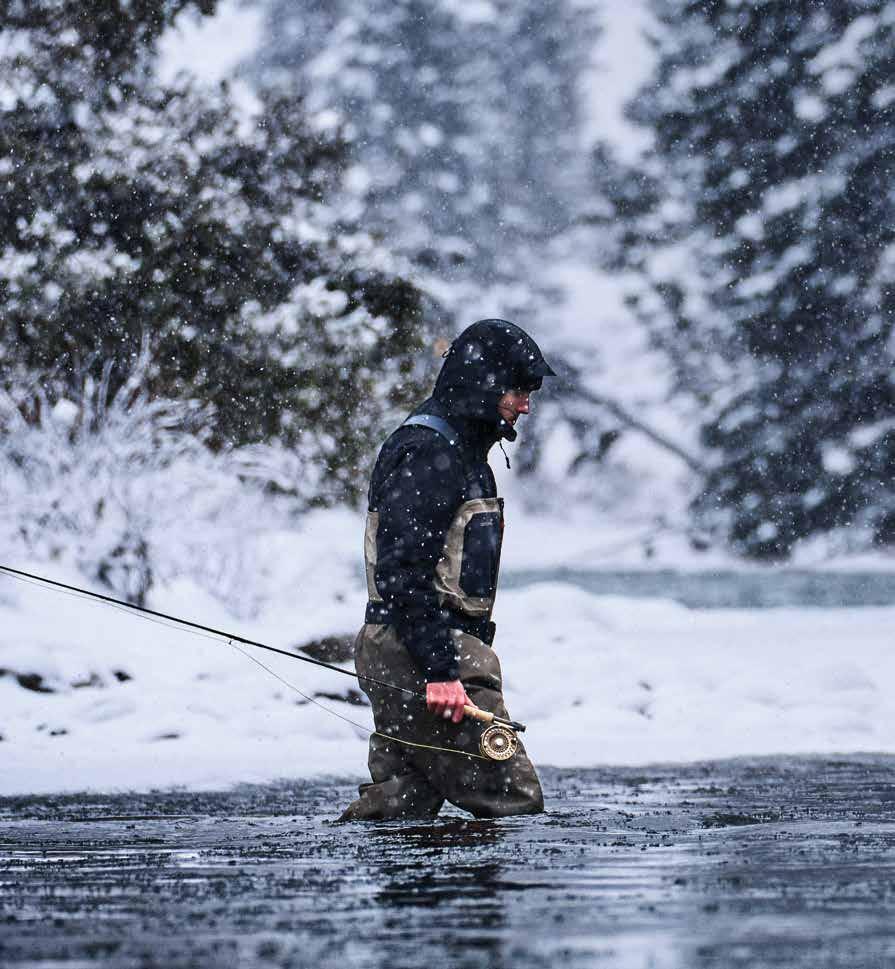


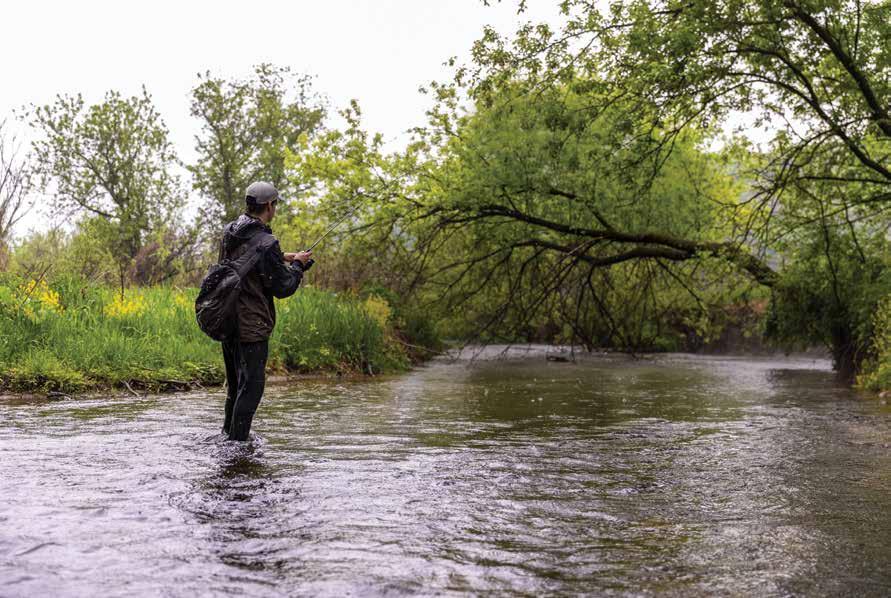
Steeped in tradition, built to perform. With comfort, traction and durability that stand up to the hunt, the new Recurve boot is made for swift, confident movement through tough terrain. DANNER.COM/RECURVE
M ulti-piece trout rods that perform like one-piece rods, the new Trout Pack Series features handcrafted St. Croix quality and proven performance in two highly packable three-piece designs to support elevated o -grid angling adventures.

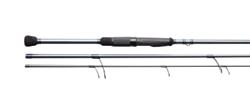

In California’s Silver Creek, on the east slope of the Sierra, hope comes in the form of white poly pipe and 400 volts of electricity.
Despite its rather ordinary name, Silver Creek is anything but. Its gin clear waters bubble out of springs below White Mountain and Wells Peak and then tumble downhill, picking up water from tributaries and snowmelt along the way. As it enters Bagley Meadows, it slows and snakes its way through lush grasses, pools below aspen groves and granite, and provides nutrients for lodgepole pine, willows, gooseberry and dogwoods. Eventually it meets the waters of the West Walker River in Pickle Meadows just beside the Marine Mountain Warfare Training Center.
While Silver Creek is almost storybook in its beauty, what makes it perhaps even more unique is that it is home to the federally endangered Lahontan cutthroat trout, specifically the Walker Basin LCT, which can be distinguished genetically due to its relative geographic isolation from the Pilot Peak strain famously found in Pyramid Lake. Walker Basin extends east from Sonora Junction to Walker Lake and the Gillis Range in Nevada, south to Bridgeport, California, and north past Yerington, Nevada. Its largely arid high desert climate full of brittlebrush, sage and pinyon pine represents the western edge of the Great Basin Desert.
LCT are one of two cutthroat trout native to the state of California and were a historically important food source for native Paiutes and Shoshone in the region. Thriving in the Walker Basin, LCT are “desert survivors,” says Nick Buchmaster, head fisheries supervisor for Inyo and Mono counties in California. They are also the largest non-anadromous trout in North America, sometimes
growing up to 50 pounds. Once thought to be extinct, a small population of Walker Basin LCT were found surviving in a desert creek outside Bridgeport.
“What is not to love?” Buckmaster asks rhetorically. Their green mottled backs, pale brown bodies with red bands and par stripes make them not only beautiful but an ideal gamefish because, as anyone who has picked up a fly rod east of the Mississippi knows, cutthroat are also pretty darn easy to catch.
LCT were federally listed on the Endangered Species Act in 1977, and for the past 50 years, the California Department of Fish and Wildlife has been working to help the species recover. The problem, as is the problem with many cutthroat recovery programs, is invasive trout. In this case, the highly fecund brook trout. No one really knows how brook trout got in the stream in the first place. Possibly sheepherders hoping to “improve” on nature or some other attempt to fix a system that wasn’t broken. But the reality is that as long as brook trout remain, LCT will struggle to survive.
CDFW tried poisoning the stream in the mid-1990s, but that did not prove effective, and until five years ago, they were trying to remove as many brook trout as possible in the hopes LCTs could outcompete the brookies. The problem? Unless you remove all the brook trout, life will find a way, as Jeff Goldblum famously said in Jurassic Park. Kill off the bigger brook trout and the young of the year multiply even more. In fishery terms, they call it the hydra effect.
Until somewhat recently, CDFW had been fighting the hydra effect without much luck. That is until Buckmaster and his team decided to try something novel – dewater 11 miles of stream on Silver Creek, segment by segment, and remove every single brook
trout – a monumental task, and one that had not been done before.
So for the past five years, Buckmaster and his interdisciplinary CDFW and CalTrout team have been hauling miles of poly pipe (an irrigation material used in arid climates), water pumps, generators, sandbags and electrofishing equipment up into the backcountry and removing brook trout from the Silver Creek system. It is a massive operation full of sandbag dams and white poly pipe stretching as far as the eye can see. But their plan is working.
After they pump out the water and remove all brook trout via electroshock fishing from a given section, they move on to the next section. Year after year Buckmaster and his team are seeing a 99.1% decrease in brook trout populations in Silver Creek. To put that in perspective, in 2022 they removed 6,000 brook trout from the stream. This past year they only found 47 invasive fish to remove. Most of the brook trout that are removed are relocated to a nearby lake.
This past year, California BHA members chipped in to help Buckmaster and his team by hauling poly pipe, assisting in electrofishing, and moving pumping equipment. CDFW hopes to finish up operations on Silver Creek by next year, and BHA will be there to assist again. The goal is to open the creek to the public for fishing within the next three years, and I for one couldn’t be more excited.
The thought of taking a tent, a three-weight and a cooler of beer up to Silver Creek and casting a size 14 Adams to hungry 16-inch Lahontans should get the blood of any angler pumping.
What happened and what is happening on Silver Creek is representative of the larger battle surrounding Lahontans, specifically, and the Endangered Species Act more broadly. Lahontans are becoming a success story. Not only do they thrive in places like Pyramid Lake and a few other Walker Basin streams, but if Buckmaster and his team have their way, soon LCTs will be restored fully to their native range and hopefully be found in places like Walker Lake in Nevada. This will be good for anglers and the ecosystem – a rare win-win.
Last year, 21 species were removed from the Endangered Species List due to extinction. Of the 1,732 different species that have been listed, only 57, including the gray wolf and bald eagle, have been delisted because of recovery. The Lahontan cutthroat trout looks to be the next.
Usually to organizations like BHA, CalTrout, and CDFW, conservation and restoration feels like a Sisyphean task. But sometimes, with a little ingenuity and collaboration and a lot of grit, hope can prevail.
Ned Weidner is a BHA member who, when he is not drifting BWOs or stalking black bear near his home in California’s Eastern Sierra, works as an English professor at Mt. San Antonio College. His writing can be found in Still: The Journal, The Write Launch, Medium and various other journals.

Last year, 21 species were removed from the endangered species list due to extinction. Historically of the 1,732 different species that have been listed, only 57, including the gray wolf and bald eagle, have been delisted because of recovery. The Lahontan cutthroat trout looks to be the next.
























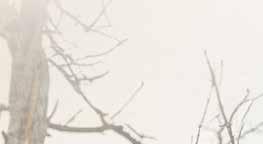


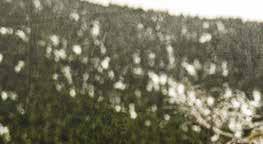
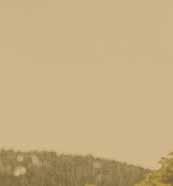



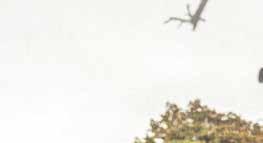

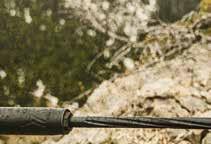






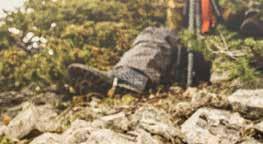











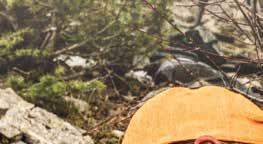




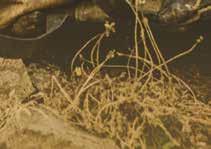










Meant to complement the historic Mark V® and Vanguard® lineups, the Model 307 is a 2-Lug, fully cylindrical action compatible with many aftermarket accessories. Proudly built in Sheridan, WY, the Model 307 will be available in a wide range of Weatherby and nonWeatherby calibers. Nothing shoots flatter, hits harder or is more accurate than a Weatherby. Learn more at Weatherby.com



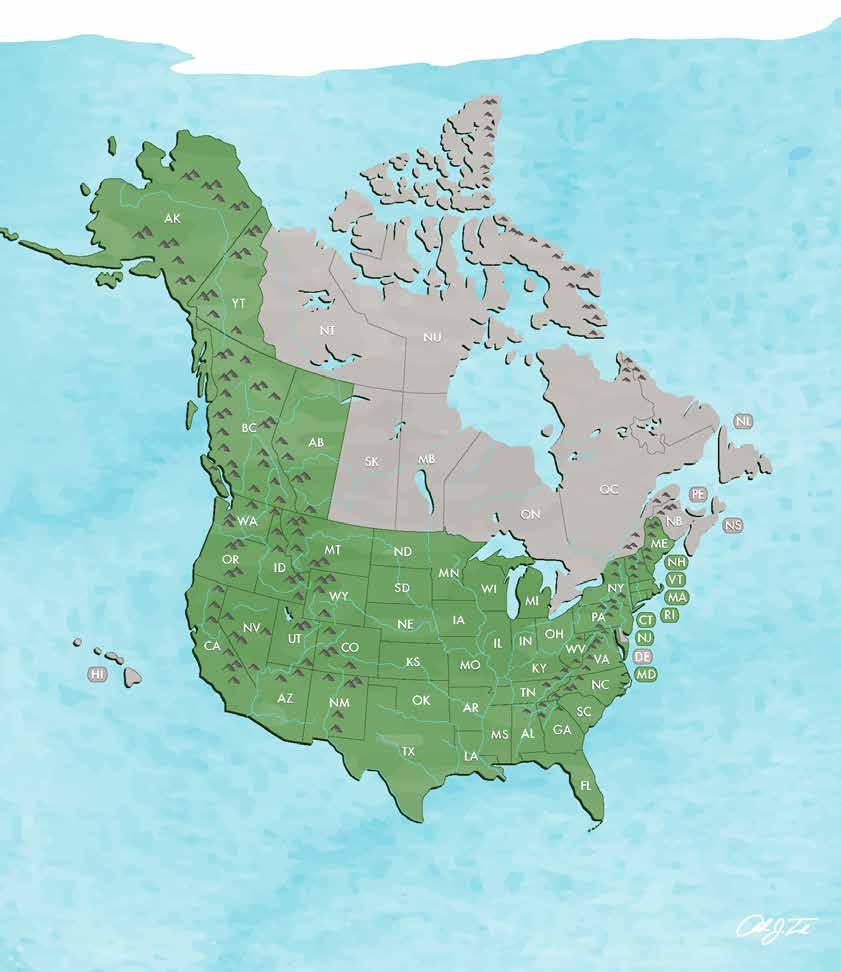
• The chapter held a Brooks Range story contest to amplify the proposed Ambler Road project and BHA’s opposition. (Read the winning story on page 69 of this issue!)
• Chapter board members testified at multiple BLM public hearings and commented in favor of the “No Action” alternative for the Alaska D-1 land withdrawals.
• In February, chapter leaders held pint nights celebrating drawn tags in Fairbanks, Anchorage, Juneau and Kodiak.
• The chapter is excited to welcome many new board members this spring, growing the chapter’s strengths and skills to do more in the vast state.
• Volunteers removed spent shells and trash from the popular waterfowl hunting area Ed Gordon Point Remove Wildlife Management Area in early February.
• The third annual Black Bear Bonanza was held March 9, attracting hundreds of families for a fun-filled day and raising thousands of dollars for conservation.
• Chapter leaders met with other conservation partners in early March, forming the Arkansas Conservation Coalition, to work for sound conservation policy and laws within the state.
• The chapter’s 4th Annual Hunting for Sustainability workshop was a huge success. New hunters learned about small game hunting near Tucson, with support from mentors and first harvests.
• Welcome to new chapter board members and new roles: Eric Kowal (social media), Alex Young (legislative), Brad Butterfield (stewardship chair), and Kyle Short (secretary).
• The Arizona and Utah chapters will meet near Kanab, Utah for the Paunsaugunt Fencing Project and Southwest BHA Rendezvous on May 16-19, 2024. Join us!
• AFI has elected five new board members, expanding our leadership team to help support the 2,800 participants we are introducing to conservation at over 180 events in 2024. See our recent blog post for more information and the events page for more details.
• AFI’s 2023 Year in Review is live on the BHA website; we hosted 146 events introducing over 2,300 participants to hunting, trapping and angling in 49 States and two Canadian provinces.
• AFI introduced military waterfowl season creation bills in New Hampshire and Nebraska in 2023 and a similar bill in Wisconsin in March 2024. Read more on our blog.
• The Fish, Wildlife and Habitat Coalition hosted ministers and elected officials in Victoria to discuss improving management of fish, wildlife and habitat and promote biodiversity through protection of intact landscapes and dedicated funding. Shamus Stone attended to represent the chapter.
• The chapter submitted comment letters for draft policy changes in British Columbia: biodiversity and ecosystem health framework, Wildlife Act review, and supporting wildlife protective order proposals.
• CWD has unfortunately been detected in BC, and the chapter will be monitoring the province’s response closely.
• The California chapter, in conjunction with the Armed Forces Initiative, partnered with the U.S. Marine Corps and volunteers from other NGOs and state agencies to install new guzzlers supporting bighorn sheep and other wildlife in the southern California desert. Volunteers from BHA and other groups hiked out to the guzzler sites in the dark to prepare for the Marine helicopters, pump water between tanks and plumb the systems once the tanks were in place.
• As part of the second phase of a grant award to restore critical winter range habitat for mule deer and other animals lost to wildfire, volunteers from the California chapter organized the Beer, Bands and Bitterbrush Stands event to plant more than 4,000 bitterbrush plants in northeast California.
• Chapter board member Reina Seraaj organized a women’s backcountry rifle clinic in conjunction with BHA AFI to teach women rifle shooting skills that will help them succeed on their next hunt.
• Legislative Liaison Ivan James was appointed to the Colorado Wildlife Habitat Stamp Committee by Gov. Jared Polis.
• Steve Witte was appointed to serve as our indemnity land liason.
• Our 15th Annual Colorado BHA Rendezvous will be held June 21-23 at the Soap Creek Corral Dispersed Camping Area (the same locale as last year), west of Gunnison.
• Our 2nd Annual Colorado Public Lands Day Bash will be held in Gunnison, May 17-18.
• In December, the chapter hosted our 4th Annual Small Game Hunt at Dinner Island Ranch. In February, we also hosted our first small game hunt in Apalachicola National Forest.
• The chapter partnered with FL Camo to host a turkey hunting workshop on February 22 for hunters trying to learn the ropes of hunting high-pressured birds on public land.
• In March, the chapter partnered with BHA HQ and Minority Outdoor Alliance to present Backcountry in Your Backyard, an all-inclusive workshop for those wanting to learn about hunting, wild food and the conservation community.
• Members were busy at events across the state, including the inaugural University of Idaho Banquet, the Western Idaho Fly Fishing Expo, the Idaho Sportsman Show, several International Fly Fishing Film Festivals, the Idaho Sporting and Wildlife Partnership Legislative Reception, the Idaho Chapter of the Wildlife Society and various pint nights.
• The chapter submitted a comment letter in support of HB404.
• We look forward to stewardship projects this spring, check the events page on the website for projects in your area.
• The Illinois chapter board met at the Lake Shelbyville Army Corp of Engineers office to work on strategic planning for 2024 and beyond. Thank you to the Corp for their partnership and use of the facilities.
• Be on the lookout for the upcoming grand opening of the BHA ar-
chery park at Lake Shelbyville. More news to come.
• State legislators have proposed a new stream access bill. Reach out to your local officials and everyone you know to voice your support.
• We had a successful turnout at the wood duck box build at J.E. Roush Fish and Wildlife. Twenty wood duck boxes were built and provided through donations from our state sponsors.
• The chapter had a booth at the Deer and Turkey Expo. Members gathered at Half-Liter BBQ for a pint night in conjunction with Pheasants Forever.
• A virtual event Turkey Talk was hosted featuring Tom “Doc” Weddle, who is a four-time U.S. super slam holder.
• The chapter helped kill HF2104, an anti-public land bill that would prohibit the DNR from purchasing land at auction.
• The chapter held our annual chapter planning meeting, where we laid out our plans for success in 2024.
• Chapter board members held the annual strategic planning meeting on January 21. In review of 2023 Kansas chapter activity, they noted that the chapter had completed 11 workdays and 12 events, all centered on improving and promoting public lands in the state.
• Kansas chapter board members helped organize and participated in the first Kansans for Conservation Day at the state capitol on January 22. NGOs and other conservation groups, along with the Kansas chapter, teamed up to discuss current legislation for this session with Kansas legislators.
• In January, the chapter helped with brush removal at Butler State Fishing Lake.
• February 24, the chapter worked with KDWP to construct fish habitat at Olathe Lake.
• In October we held our first ever Louisville Bird Dog Pint Night.
• In November the chapter tabled at the Gun Show and Preparedness Expo in Hindman and The Wildlife Society Annual Conference in Louisville.
• The chapter held its annual Maysville Public Land Film Fest, along with its first-ever Walton (northern Kentucky) Pint Night.
• In January the chapter resumed its annual Conservation Coffee series, with speakers from Ducks Unlimited and Daniel Boone National Forest and a DIY western hunting presentation.
• The chapter also tabled for the first time at the Louisville Boat, RV & Sport Show and held informal monthly Lexington pint nights.
• The chapter changed its name from the Capital chapter to Mid-Atlantic chapter to now include the state of Delaware. The chapter held an inaugural pint night in Delaware to kick off the new relationship, which was attended by state officials and BHA members.
• Board members organized and held a mentored deer hunt in Virginia. Participants were selected via application and received instruction on scouting, firearms practice and in-field techniques.
• The chapter attended the Virginia Fly and Wine Festival again in Doswell. The two-day festival had attendees from around the country.
• The chapter held two incredible MeatEater Trivia pint nights in conjunction with the MeatEater Live podcast events.
• The chapter took a strong stance against a commercial fishing bill that would have lasting effects on the conservation of the Great Lakes.
• The chapter supported two youths with full tuition to a summer camp held by MUCC.

• The Minnesota chapter was busy gearing up in preparation for the North American Rendezvous, held at the Minneapolis Convention Center April 18-20.
• Members should expect a survey for our member campout this summer/fall.
• The chapter participated in a public lands day at the Capital in March.
• The chapter has released its upcoming schedule of events for 2024, which includes pint nights, archery shoots, conservation work days, Dive Bomb’s Squadfest 2024 and more. Please check out backcountryhunters.org/missouri for more info.
• Chapter board members recently attended the North American Rendezvous in Minnesota. Go to Instagram.com/missouri_bha to see content from the event.
• The Missouri board has a few committee vacancies. If you would like to get involved, come say “hi” at an event or email Missouri@backcountryhunters.org
• The chapter launched a raffle for a statewide mule deer license to raise money for mule deer conservation.
• The chapter said thanks and farewell to outgoing board members Scott Desena and Corey Ellis and welcomed new board members Caleb Teigen, Sunni Heikes-Knapton and Dan Tracey.
• The chapter championed the Lost Creek proposed land acquisition, weighed in on the new elk management plan and season-setting regulations, sounded the alarm on a deceiving ballot initiative, asked for deeper analysis on a proposal to drastically increase commercial use on the Beaverhead-Deerlodge National Forest, supported the Montana Headwaters Legacy Act and advocated for strong protections in the Great Burn Proposed Wilderness.
• The chapter tabled at the Nebraska Bowhunter Association Banquet; good to see everyone at the BHA booth!
• Thank you to those who came out for the fence removal project at Wapiti WMA in March.
• The Trashy Cat Event is on again this year in May at Medicine Creek WMA. It’s a weekend of camping, fishing and a little clean-up of the WMA. Keep an eye out for dates and additional information.
• The chapter would like to welcome Dallas B. Hatch, Don Klebenow and Jeremy Mitchell to the Nevada board.
• The Nevada chapter doubled membership in 2023!
• It was great to see our members at the annual meeting and welcome all the new members we met at Sheep Show.
• The Rhode Island team opposed an aquaculture permitting application that would negatively affect shellfish and sea duck wintering habitat.
• The Massachusetts team held a small game hunting workshop with MassWildlife in January and hosted a small game hunt in February.
• In Maine, a long-term public land project to remove several hundred feet of fencing continues to evolve in partnership with Maine IF&W and BPL. Contact maine@backcountryhunters.org to receive updates and get involved.
• The New Hampshire team submitted a statement of support to the NH Fish & Game Department during the biennial comment period.
• Volunteers from southern New England made their way to Rhode Island to assist the DEM with duck banding.
• This past fall the the chapter joined the New Jersey State Federation of Sportsman’s Clubs.
• The chapter was invited to host a seminar covering E-scouting, backcountry hunting logistics and the gear required for backpack hunting at the annual Garden State Deer Classic. The two-day show also included one-hour seminars hosted by the various sportsman’s clubs in the state of New Jersey.
• For the third consecutive year, the chapter teamed up with the New Mexico Department of Game and Fish for the Sandia Mountains bowhunting outreach event. During a youth-only bowhunt in November, and a second bowhunt in January, over 500 contacts were made with members of the public at highly trafficked trailheads near Albuquerque. Information regarding safety, hunting area boundaries and regulations were shared to mitigate potential conflicts with the public and ensure future hunting access to the Sandia Mountains.
• Volunteers represented the New York chapter at the Syracuse Outdoor Expo. We met current members, added some new ones and spread the word about protecting public lands.
• The chapter collaborated with Artemis Sportswomen and WildHERness at the Ice Fishing 101 event. It was a day full of smiles, laughs, good food and fish.
• The chapter collaborated with Hunters of Color and The Nature Conservancy of New York on the 3rd Annual Mentored Bow Hunt on Long Island. Eight new bowhunters built the skills to continue on their hunting journey, and all went home with delicious venison and plenty of practice butchering wild game.
• The chapter board met with Dakota Prairie Grasslands and North Dakota Game & Fish Department staff as a part of their annual chapter planning meeting where they discussed work and goals for 2024.
• The chapter worked with the Department of Trust Lands to reduce the number of acres closed during portions of the 2023 hunting season by half.
• The chapter celebrated the end of hunting season with the 6th Annual Trashy Squirrel Hunt. Regional BHA member teams prowled public lands over three weeks in late January and February for bushytails and litter, with points awarded for total poundage, squirrels bagged, new hunters and new BHA members registered.
• March saw the first chapter-organized camping trip, with members from across the state meeting up in the Uwharrie National Forest to reconnect with friends, refocus on the mission and reload with positive energy for the year to come.
• The Camp Lejeune AFI Club is hosting an inshore fishing camp, June 14-16, in New Bern. If you are or know a servicemember who’d like to participate, contact ncafi@backcountryhunters.org.
• The Ohio chapter board met to reflect on 2023 and eagerly planned ahead for 2024. In 2023, we held a big ol’ party, Muster in the Marsh, which was successful in many ways, tangible and intangible. It was also a significant fundraising year even with the high price tag of running such a large event.
• Our focus for 2024 is more boots-on-the-ground work, volunteer engagement, policy talks and of course public events – including a booth and pint night at the Sportsmans Expo in Columbus, multiple fly-tying events, river cleanups and more. The summer won’t pass without an Ohio BHA party, and we’re looking to fill up some dumpsters too. It’s gonna be a good year!
• At the end of 2023, we said goodbye to three long-serving members of the board: Gabe Karns, Brandon Skiver and Levi Arnold. The loss of these serious and thoughtful conservationists is not easy, but the structures and friendships they built will continue. We love all of them dearly, and all are forever welcome around our campfires.
• In December, the Oklahoma chapter hosted its 2nd Annual Duck Camp at G&H Decoys Headquarters in Henryetta.
• The International Fly Fishing Film Festival was successfully held March 14 at Circle Cinema in Tulsa. Thanks to everyone who attended!
• Stay tuned to the OK chapter social channels for updates on all events, policy news and other conservation topics!
• The Oregon chapter supported a wildlife omnibus bill (HB4148) that would address and expand resources – to combat zoonotic diseases including CWD, migration corridor crossing, wildlife coexistence and invasive species on the landscape.
• The chapter held its annual meeting to reflect on wins from 2023 and we look forward to what is to come in 2024.
• The chapter hosted two MeatEater Trivia pint nights in November in support of the live tour. At the show, member Kyle Collins bested the crew and donated his winnings back to the chapter. Thank you, Kyle!
• Chapter leaders Bob Smith and Mike Strollo organized three work days on State Game Lands 52, removing invasive plant species. This is the third year of the project.
• The annual in-person board meeting was held by chapter leaders in State College on January 13.
• The chapter submitted a letter in objection to the final Environmental Impact Assessment and Draft Decision Notice for the proposed Golden Crest Exploration Drilling Project.
• The chapter board hosted a series of virtual planning sessions for 2024.
• Chapter leaders hosted a Backcountry Bird Hunt experience in partnership with Weatherby. Two lucky Rendezvous Auction winners chased prairie grouse and pheasants in the backcountry prairies of northwest South Dakota.
• The Tennessee chapter spent a day in January at Percy Priest WMA near Nashville building wood duck houses with the Tennessee Wildlife Resources Agency. It was a great day of conservation work and education for all the volunteers. Our volunteers learned why boxes are needed for wood ducks in the breeding season. They learned the importance of proper spacing, so that each box was not inundated with too many egg-laying females. This event further solidifies the chapter’s work with TWRA. It was a great hands-on event.
• The chapter kicked off its 2024 Hunting for Sustainability program for new adult big game hunters.
• Members stayed informed on relevant bills related to public lands, waters and wildlife throughout the 2024 Utah Legislative Session through advocacy articles published by the chapter board on the chapter’s web page.
• Preparation for the chapter’s flagship fence surveying project on the Paunsaugunt unit, Miles For Muleys, has been in full swing and members are gearing up for the overnight stewardship opportunity in southern Utah on May 17-18.
• The chapter successfully combated a fur ban bill and garnered over 400 messages in opposition through an action alert aimed at the committee hearing the bill.
• The chapter held its annual meeting where it looked at wins from 2023 and planned for what is to come in 2024.
• The chapter hosted several great events in Q1, including a Bugs & Brew fly-tying pint night in Rivesville and a pint night in Charleston, coinciding with a great presence at the Charleston Trophy Hunters Expo.
• The chapter will be part of the Greenbriar Fly-Fishing Classic, May 18, and the Appalachian Fly-Fishing Festival, May 31-June 2. Be sure to stop by our booth space and chat all things conservation and public lands!
• The chapter continues staying engaged on West Virginia public lands issues while planning events around the state. So be sure to follow oursocial channels on both Instagram and Facebook for the latest updates!
• The Wyoming chapter hosted an IF4 Film Showing in Cheyenne at the Kiwanis Community House on March 7.
• The chapter joined other sportsmen’s organizations to ask the Wyoming Legislature to conserve the Kelly Parcel by supporting conveyance to Grand Teton National Park.

Find a more detailed writeup of your chapter’s news along with events and updates by regularly visiting www.backcountryhunters.org/chapters or contacting them at [your state/province/territory/region]@backcountryhunters.org (e.g. newengland@backcountryhunters.org).


As the last American-made decoy company, we will support and preserve American waterfowling for the next generation.
Will you join us?

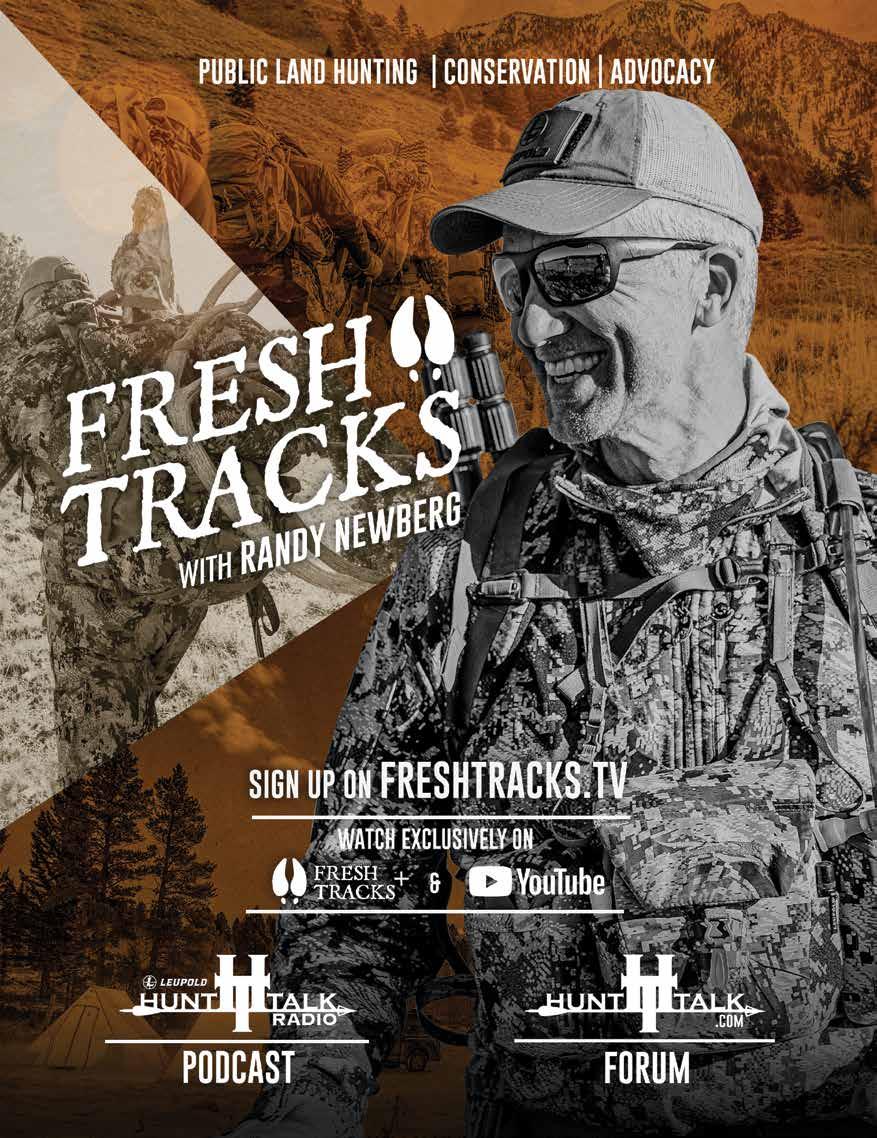
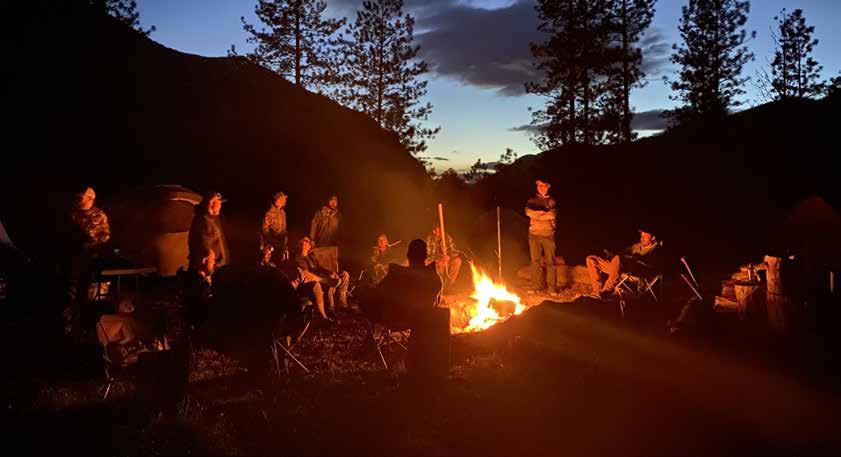
On the opening day of the Montana turkey season, BHA’s Armed Forces Initiative, in partnership with Patrol Base Abbate, a nonprofit focused on providing veterans an oasis to the chaos of life after service, came together for a few days to talk public lands and hunt turkeys. The wall tents, cold food, and Copenhagen-lined conversation formed a familiar and welcoming atmosphere for those accustomed to patrol bases on the tattered fringe of American influence. The mission and decreased danger level presented the only real changes, and those drying gear over the wood stoves after a long day’s hunt appreciated both.
“Your sector of fire lies from that big tree to that pile of scrub brush,” Casey instructed with the customary knife hand as I scanned my sector of the wind-beaten Montanan landscape. Finding myself assigned a field of fire that interlocked with teammates perfectly to maximize coverage of the engagement zone does not present me with a new experience. However, the novelty of hunting with those as fluent in the military way of life and just as passionate about the outdoors infected me. The three of us sat, spread out so that interlocking fields of fire covered all avenues of approach to the roosting trees we guarded. With our ambush set, we waited for an incoming gobbler.
Our fire team worked diligently in the places assigned to us to hunt, calling, waiting and stalking the gobblers we located with determination and zeal. Finally, on the third day, in the pouring rain, Ryan Phillips low-crawled 60 yards over an hour to get within shotgun range of a lone tom feeding in a field. With his chest and legs soaked in cow pie-infused mud, he raised his 20 gauge and took the first bearded tom he ever aimed at.
Though Ryan got to pull the trigger and take the fan home, the thrill of victory pulsed through our small fire team. We endured hours of punishment from the austere Montana weather, emptyhanded returns and brutally long days. Hearing Ryan’s shot, I felt I had killed one myself. I will never forget the fist pumps and cheers while he held his first-ever turkey up for the world to admire.
My few days in Montana formed me. Sitting around the fire making fun of one another, pouring over maps and wargaming what strategy to employ the next day felt like two chapters in my life had merged. The technical practices of the Army had married
the spirit of every hunting camp I have experienced, producing a unique offspring not found elsewhere.
Nowhere else have I found people who think, plan, work and execute at that level of intensity and passion outside the military. The military machine transforms young kids into modern warfighters capable of solving any problem placed before them. As a result, a unique population forms with its own highs and lows, culture and counterculture, skillsets and vices.
While the military took undisciplined high school students and made them into a part of the most deadly force this world has ever known, it completely fails to teach them how to deploy, engage and destroy problems once they come back home. Though durable and veracious, many have problems when they depart one of the branches of the armed forces. They don’t anticipate that they will give up more than just a paycheck. Many don’t realize that as they turn in more than just rucksacks as they out-process, they also surrender their purpose and identity.
Nonprofits rush to their aid, retreats and group therapies try to bandage the wounded heroes, and sometimes they produce results worthy of celebration. Many times they don’t. No matter what, none of that will fill the gaping hole left in the chest of every service member. Nothing can replace the seductive, addictive and exhilarating feeling of executing a mission with your closest friends. Replicating that sort of environment nears impossible.
Yet, hope remains. The Armed Forces Initiative, led by veterans for the cause of public lands advocacy, creates that environment and provides a mission for those missing a disciplined life of purpose.
Previous generations figured this out. After World War II, many returning veterans came home to build the outdoors industry and the conservation landscape. They helped set hunting seasons, established the ski industry and worked in outdoor advocacy for the rest of their lives. The few years they had fought the enemies of the United States of America served as the formative period for the next centuries worth of hunters, anglers and public land advocates.
However, a narrative of victimhood remains undeniably strong in today’s veteran community. They suckle on lies of their marginalized, lost and forgotten victimhood. A time and place exist to remedy elements of that reality, but aid stations have no mailbox. The purpose of any type of physical, mental or spiritual care lies in dusting off trauma victims and getting them back into the fight.
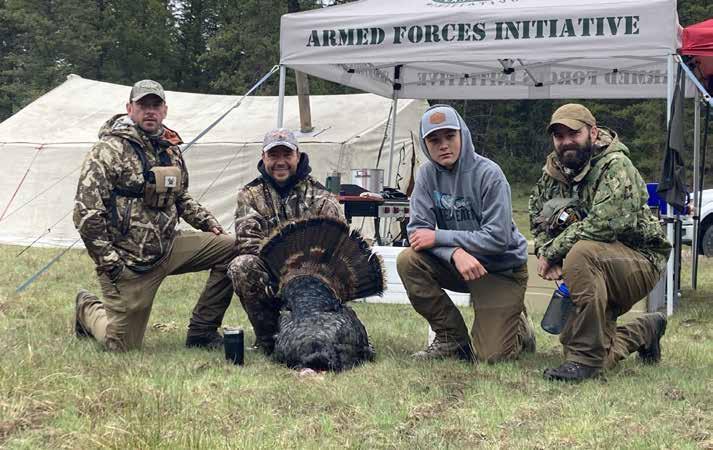
As Gen James Mattis put it, “While victimhood in America is exalted, I don’t think our veterans should join those ranks.” Veterans do not linger about broken; they rise to become a force to contend with.
As Gen James Mattis put it, “While victimhood in America is exalted, I don’t think our veterans should join those ranks.” Veterans do not linger about broken; they rise to become a force to contend with. They shape outcomes and do not embrace victimhood. Far from the ramshackle relics of a war misunderstood, today’s veterans will evolve into the foundation on which we build tomorrow.
A mission lies before the veterans of today – the American way of life lies besieged by those who don’t understand it. Errant government policies, greed and ideologues seek to siphon off public lands, destroy the world’s best conservation system and end a way of life that built the greatest nation the world has ever seen.
As a proud community member, I give this charge to my fellow veterans. While visiting the aide station after military service bespeaks of wisdom, so does knowing when to return to the fight, albeit a new one. The people of the United States of America spent untold amounts of money on us, and for many of us, they will for the rest of our lives. We owe it to them and the generations who will come after to provide a return worthy of their investment.
The Armed Forces Initiative’s unique approach gives us a chance to employ the leadership skills and character traits that we developed as members of America’s warrior class on a timeless cause. We swore to defend the American way of life against all threats, foreign and domestic. Many of us sacrificed greatly in defending against the foreign threat. Now we must turn our eyes to the domestic ones.
We no longer exist for combat but for lobbying, stewardship, education and training. We must preserve the hallowed grounds of generations before us so we can pass it on to our children. Poorly thought-out policies, greed and apathy wreak as much destruction, if not more so, than the terrorist and clandestine agents we have fought against these past two decades to the lands we love and depend on.
The wars have passed. The time has come to use the skills the American public invested in you at home. Built never to quit, give up, or surrender, we veterans can provide the hope for public lands desperately in need of support in an age of ant-hunting lobbyists, exploitive corporate interests and self-serving politicians.
We have a new mission.
BHA member B.B. Sanders is a freelance writer and National Guard Chaplain. He grew up fishing and hunting in southern Arkansas, but today enjoys hunting and fishing across the world. You can contact him at bbsanders.com
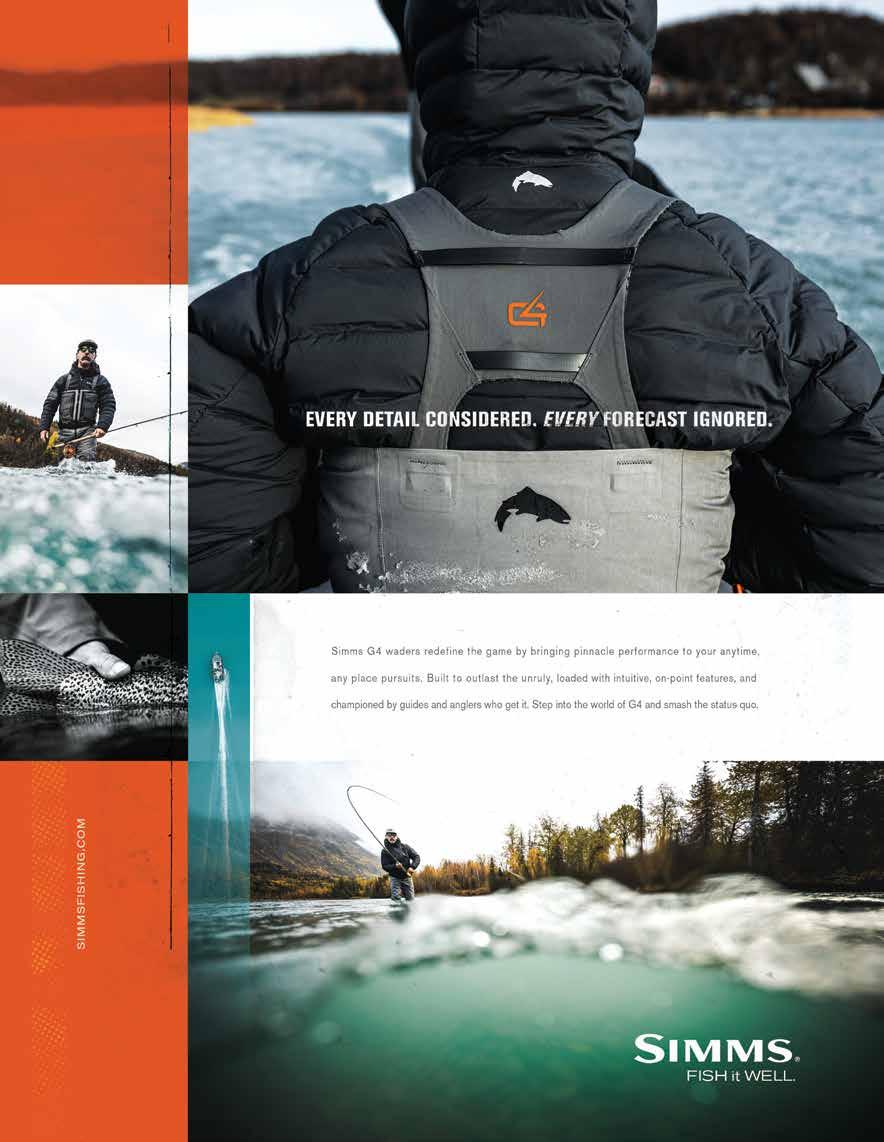


Being a public land owner is an incredible privilege. However, with that great privilege comes a responsibility to ensure that our public lands are being managed, conserved and utilized in a way that does the greatest good for the greatest number of people, in perpetuity. Sometimes, the best way to make a difference is by writing a letter to your senator or weighing in on one of the Bureau of Land Management’s many resource management plans, but other times it means rolling up your sleeves and getting some work done on the ground.
It’s nearly impossible for any one person to grasp the task of maintaining 193 million acres of national forests, 245 million acres of BLM land, 95 million acres in the national wildlife refuge system, 85 million acres under management by the National Park Service and 26 million acres managed by the Department of Defense. Of course, Indigenous people have been caring for these lands and more since time immemorial.
Each of these federal land management agencies has been growing since their inception, and the professionals who work in these institutions generally care as much about the land under their stewardship as we do. However, they aren’t always able to get all the work done.
Anybody who has ever been to the DMV knows that government is slow and often bureaucratic. Unfortunately, our public land management agencies face the same challenges. Extensive procedures and regulations combined with chronic underfunding has led to a political environment where many of our public land management agencies lack the resources, capacity or authority to restore and maintain high-quality wildlife habitat – not to mention infrastructure for access.
To address this gap, Congress authorized the federal stewardship contracting program, which allows the Forest Service and other federal land management agencies to collaborate with trusted
partners to fulfill their mission. This authority is different for each agency, but it generally allows partners “to perform services to achieve land management goals ... that meet local and rural community needs.” To qualify, projects must address specified forest or rangeland management goals set forth by the agencies themselves and must be carried out using an approved plan of action. In practice, this can include projects ranging from invasive species removal and fencing repairs to active forest management and applying prescribed fire to rangelands and forests. Like many public land issues, stewardship is often thought of as a western issue, but there is also substantial work occurring east of the Mississippi River.
For the last several decades, these public-private partnerships have helped multiply the workforce of the federal agencies. Still, even though NGO partners can hire staff more quickly than federal agencies and can typically operate with greater internal efficiencies, funding remains a constraint.
As covered in a previous issue of Backcountry Journal, the Investment in Infrastructure and Jobs Act, as well as the Inflation Reduction Act, infused federal agencies with extensive resources. However, these bills did little to alleviate the procedural hurdles that make deploying these resources so difficult. One way that the Forest Service in particular has obligated these funds is through robust stewardship agreements, since deemed “keystone partnerships.” These multi-year, multi-million-dollar agreements allow trusted partners of the National Forest System to work with the agency on a national scale wherever staff or volunteer capacity can help achieve management goals.
Several sporting-conservation organizations, notably the National Wild Turkey Federation, the Mule Deer Foundation and the Ruffed Grouse Society, have signed these agreements after several decades of stewardship contracting, further committing themselves to assisting these agencies in carrying out the necessary work of land management. They have hired foresters, project
coordinators, and NEPA specialists en masse to hit the ground running on this massive undertaking.
Motivated by improving, restoring or conserving wildlife habitat, these organizations are also fulfilling land management goals related to wildfire mitigation, carbon sequestration and recreational infrastructure, as well as several cultural values associated with healthy lands. Of course, maintaining forest and rangeland health benefits a wide variety of species on our public lands, including those we hunt and those we don’t.
While an ethic of stewardship has always been part of the ethos of Backcountry Hunters & Anglers, and thousands of volunteers have worked to restore and conserve our local, state and federal public lands since this organization’s inception, incorporating it into the organization’s business model is a relatively new development.
In July of 2022, BHA entered into their first stewardship contract, investing in dedicated program staff to execute a work plan on a swath of BLM ground alongside a cadre of volunteers. That project began with a $2.5 million agreement dedicated to inventorying and removing fencing on land managed by the BLM in Colorado but was supplemented by funds from the National Fish and Wildlife Foundation RESTORE program.
“I’ve been incredibly proud of how many of our volunteers have stepped up to help with our stewardship efforts,” said BHA Stewardship Manager Britt Parker. “It has been amazing seeing so many public land owners helping to improve habitat for the wildlife
Service and Army Corps of Engineers and has begun work on restoring wet meadows in Northwest Colorado, funded by the U.S. Fish and Wildlife Service. Each of these projects make a substantial impact on local ecosystems, and in aggregate, are a way we’ll be able to make a tangible difference at a landscape scale. However, as BHA continues to do this work, it’s also critical to make the broader (nonhunting, non-angling) public aware of the impacts of this work.
“The work we’re doing on the ground is a perfect opportunity for hunters and anglers to get their hands dirty while connecting with our state and federal land and wildlife management partners,” continued Parker. “Not only do we have the incredible opportunity to steward our public lands, we are also some of the most enthusiastic ambassadors of and advocates for these places. Doing this work helps us bridge the gap between the public and federal land management agencies as well as with those outside the hunting and angling community to work towards a shared goal of habitat improvement and stewardship.”
As all BHA staff and volunteers across the country work to ensure North America’s outdoor heritage of hunting and fishing, we must also continue the tradition of stewarding the public lands that we have the great privilege to own.
Charlie Booher is a conservation lobbyist at Watershed Results LLC and holds degrees in wildlife biology, public policy and natural resource conflict resolution from Michigan State University and the University of Montana. Outside of the office, you can find him hiking the mountains of Western Montana and re-learning how to hunt and
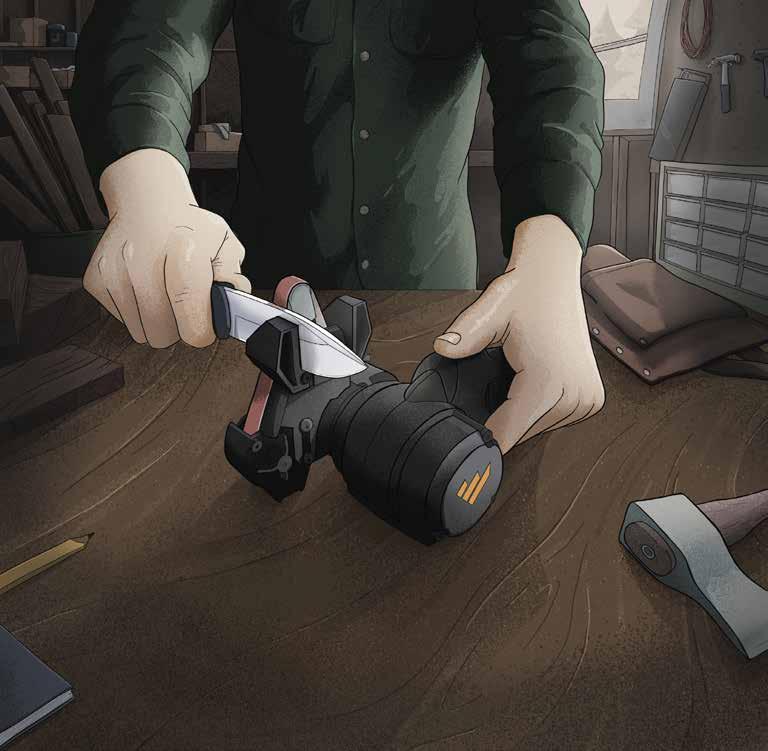
Experience shaving sharp edges on all your knives.
The KNIFE & TOOL SHARPENER Mk.2 is easy to use and delivers best-in-class sharpening for all knives and edged tools.
Sharper than the day you bought them.
LEARN MORE AT: WORKSHARPTOOLS.COM/WSKTS2-LEARN-MORE

Imagine if someone put the same time, thought, and effort into designing fishing apparel that you put into finding fish. Someone did; we’re Skwala. We make thoughtful, dependable, comfortable gear—so meticulously built and thoroughly tested that you hardly notice it. Allowing you to focus on more important things, like fishing.
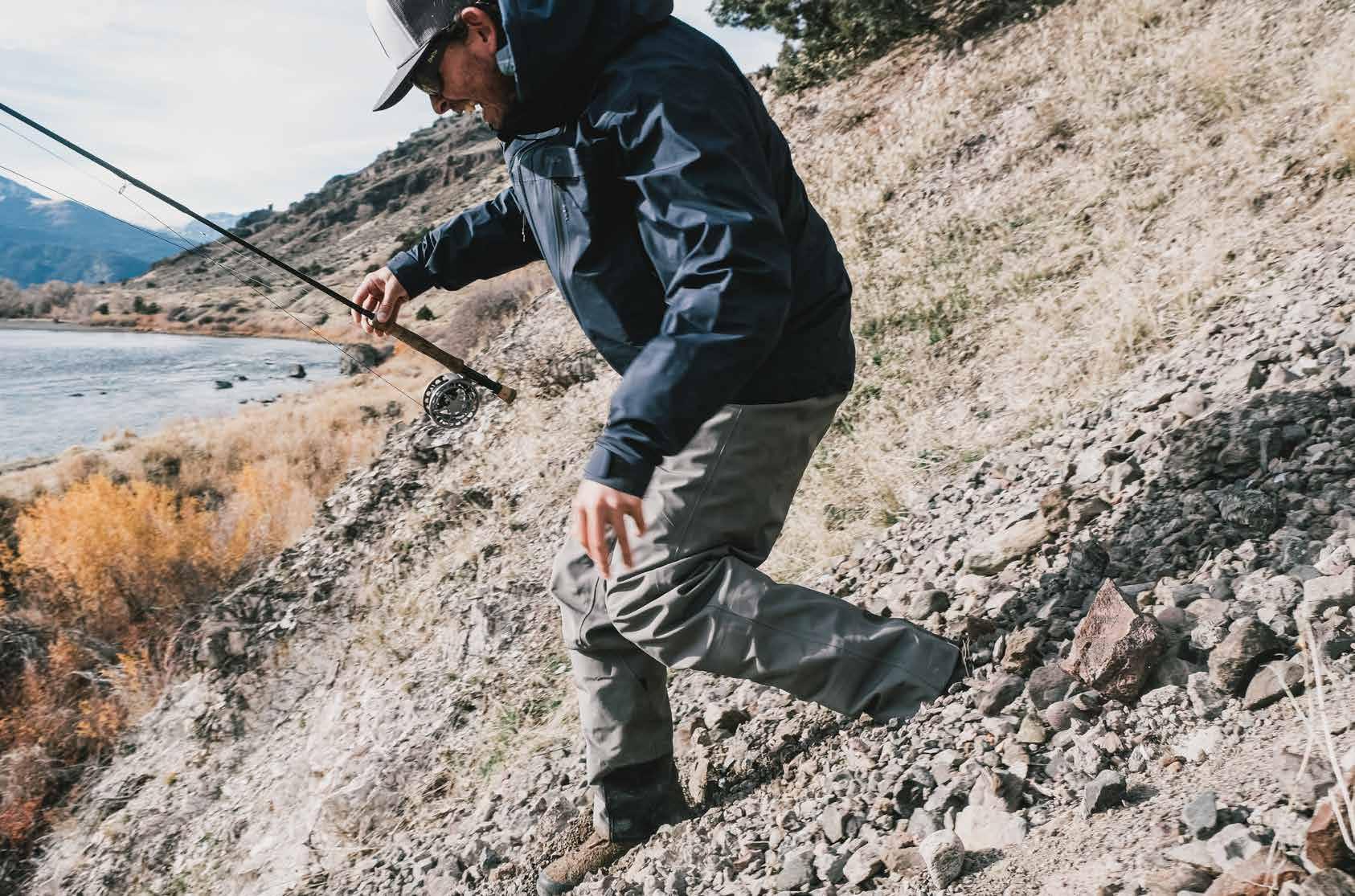
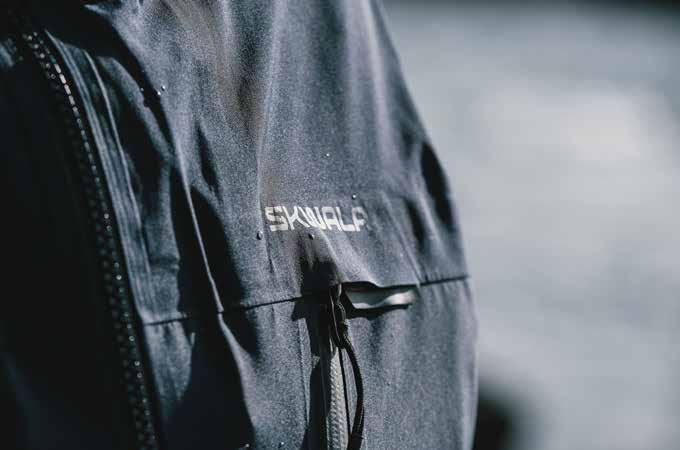

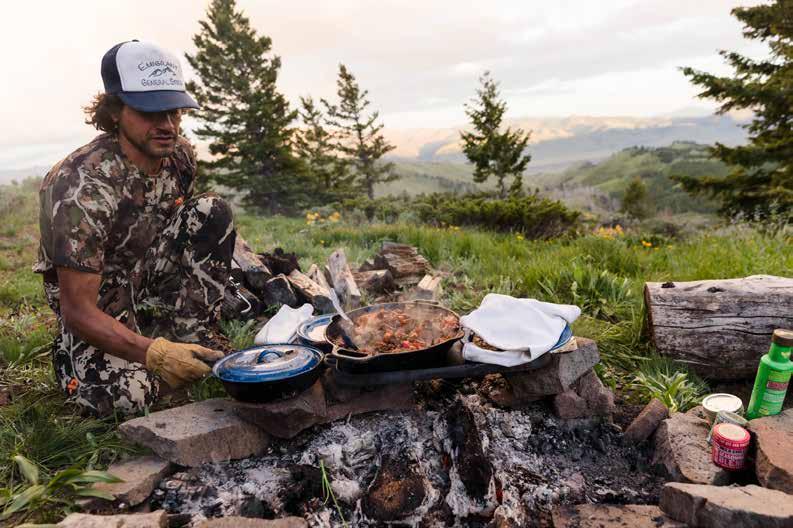


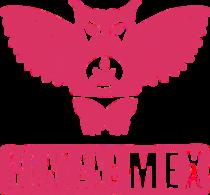
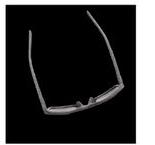





































































































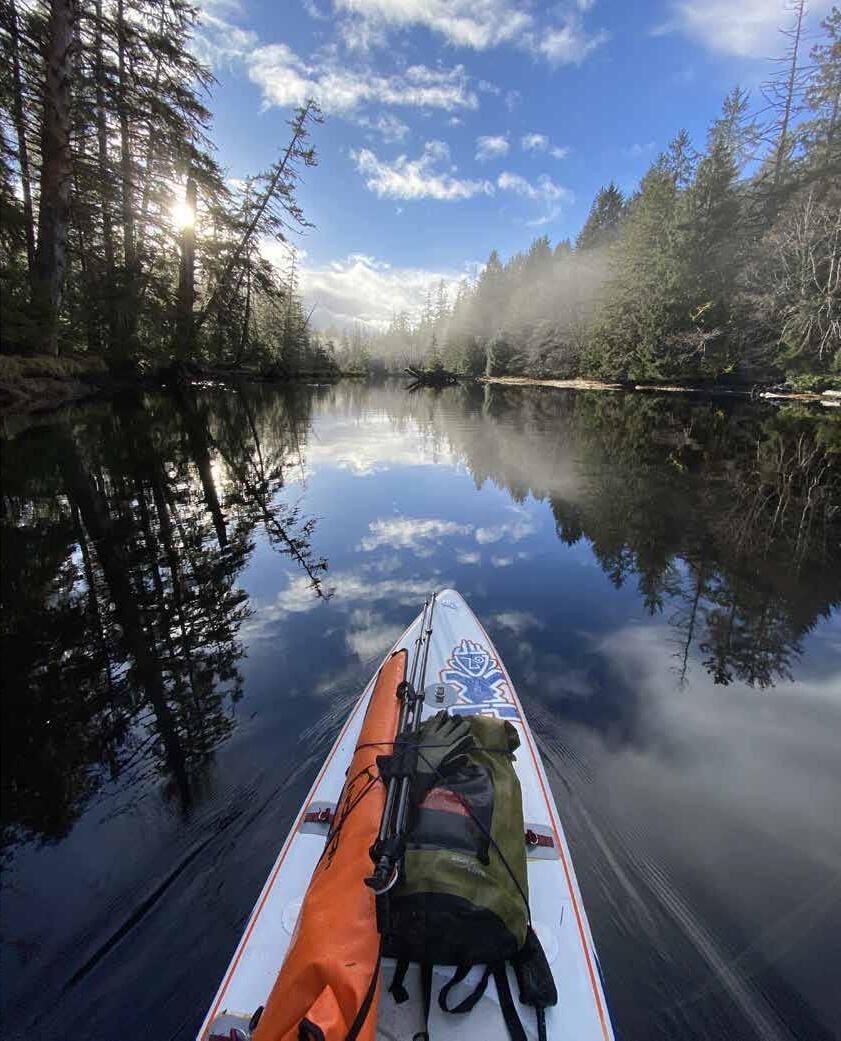


When my family arrived in Haida Gwaii, British Columbia, just off the coast of Alaska’s panhandle, hunting the island’s abundant Sitka blacktail was a huge part of our imagined adventure for the coming year’s home exchange. Our home back in the Rocky Mountains is hunting paradise, and it’s one of the sunniest places in Canada. Our new home was one of the wettest. Compared to an average annual precipitation of 29 inches in our old hometown of Kimberley, Mitchell Inlet on Haida Gwaii’s west coast receives a staggering 21 feet of precipitation annually, making it one of the wettest spots on the planet. Instead of mountains and glacial rivers,
rainforest and surf beaches made up our new world, including North Beach and East Beach, which combined to form nearly 70 miles of beach. Our supplies for the year included a family set of winter wetsuits, surf boards, our hunting kit and a lot of good rain gear.
Here in the wild North Pacific rain coast, water-based hunts seemed like a natural choice. British Columbia’s hunting regulations allow firearm discharge from non-motorized craft – an added bonus to opening up unlimited quiet and roadless hunting ground. So in late summer, we packed up both vehicles, the family dog and cat





and as many SUPs and kayaks as we could load and headed off for our new home on Haida Gwaii, 1,050 highway miles and an eight-hour ferry ride away.
Haida Gwaii, meaning “Islands of the People,” has been the home of the Eagle and Raven Clans of the Haida people since time immemorial. The wild North Pacific sculpted the people just as it shaped the 400-plus islands of the Haida Gwaii archipelago. However, like all Indigenous cultures, the fierce, resilient and resourceful Haida world was stretched and torn with the arrival of Europeans.
Starting with the arrival of Juan Perez in July 1774, Spanish, British and Russian explorers and fur-traders, miners and forest thieves, all took their toll on the islands. But the Haida spirit, tempered by the storms of the North Pacific, never broke.
“The Haidas are coming!” is a phrase still seen on local bumper stickers and was uttered in fear from Alaska to modern-day Oregon, as these sea-faring warriors and traders rode the waves up and down the coast in massive canoes carved from a single, giant cedar tree. These canoes, some of the largest dugouts in the world, reached over 60 feet in length, spanned by a 6-foot beam. They could carry up to 40 paddlers and warriors or up to 10 tons of freight.
Pre-contact, over 100 villages dotted these wild coasts, with an estimated 20,000 Haida including the Kaigani Haida in present-day Alaska. Haida chiefs like Koyah of S’Gaan Gwaii in the south and Chief Wiiaa of Gaw Tlagée, Masset in the north, captured a half-dozen European ships, including the Ino and the Resolution in 1794.
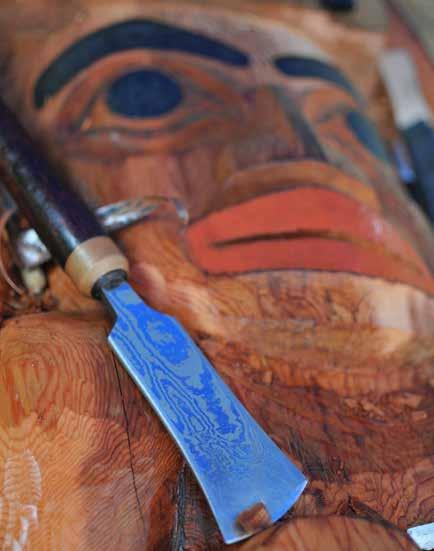
When flotillas of Haida canoes filled the harbor in Victoria on Vancouver Island over 500 miles away, traders unintentionally helped speed the scourge of smallpox and other European diseases up and down the coast. Survivors retreated inwards, village to village, until by 1900 as few as 600 Haida remained.
What disease started, Canadian colonial government policy continued, as Indigenous children were kidnapped from their home villages and taken to far-off residential schools, where they underwent cultural genocide. Many of these children never came home, and between 2021 and 2023, ground-penetrating radar revealed over 1,000 unmarked children’s graves at residential school locations across Canada.
That the Haida spirit and culture was not crushed continues to be witnessed: In 2010 Haida leader Guujaaw formally returned the colonial name Queen Charlotte Islands to British Columbia’s then-Premier Gordon Campbell in an ornate bentwood cedar box, stating, “While we cannot unwind history, we will leave colonialism behind us, as we have laid the foundation for a respectful relationship into the future.”
Haida Gwaii, steeped in Haida artwork and poles, and reliance and respect for the land and ocean, truly feels like another country, as if you should show a passport upon arrival. The entire fabric of the islands is based on the Haida premise of Llgaay gwii sdiihlda –restoring balance.
Haida art, carving, monumental poles and traditional longhouses
are the norm in the Haida towns of Old Massett and Skidegate. Currently 4,200 people live in seven widely spaced communities, including the “big city” of Daajing Giids (mistakenly called Queen Charlotte City), population 964.
Known as the “Galápagos of the North,” parts of Haida Gwaii escaped the last ice age, instead forming ice-free refugia that bred unique subspecies of pine marten, saw-whet owl and the world’s largest black bear subspecies (Ursus americanus carlotae). Weighing up to 700 pounds, “Taan” also have notably larger skulls and molars than any of their mainland cousins.
One of the continent’s five original caribou subspecies, Dawson’s caribou (Rangifer tarandus dawsoni), was the only large ungulate native to the island, but these predictably disappeared with the arrival of rifles. Ironically the last three of these caribou were shot in 1908 as specimens for the Royal British Columbia Museum, where three stuffed specimens of this extinct subspecies can still be viewed today.
Currently, over 1.5 million nesting seabirds breed on Haida Gwaii, including ancient and marbled murrelets, rhinoceros and Cassin’s auklets, storm petrels, tufted and horned puffins and many other pelagic species.
Despite the fact that 35% of the archipelago is formally protected,

Giant spruce tree: Haida Gwaii was home to some of the world’s largest Sitka spruce trees, with several of the last remaining 800-year-old giants boasting nearly 50-foot circumferences and up to 300 feet of height. Spruce reached $1,000/board foot in the 1980s resulting in the near-total liquidation of nearly all of Haida Gwaii’s once monumental spruce forests.

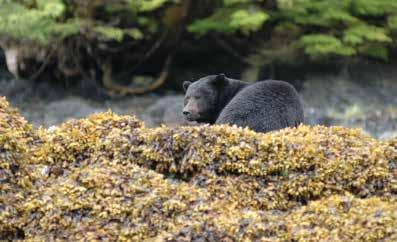
introduced and invasive species are a huge problem. Everything from Pacific tree frogs and banana slugs to green crabs, beavers and red squirrels have found their way to the islands at the hand of man.
But three invasive species are especially destructive: raccoons, rats and Sitka blacktail deer. Rats, stowaways on logging barges and other ships, and raccoons, introduced in 1940 as a furbearer back when Davie Crockett hats were all the rage, both wreak havoc on ground-nesting seabirds. Pelagic seabirds like murrelets, auklets, storm petrels and puffins spend almost their entire lives on the high seas, but must come ashore to nest, either in burrows or rocky crags. One sad example among many is Langara Island on the northwest point of the archipelago. An estimated 200,000 breeding pairs of ancient murrelets, representing nearly a million birds including chicks and non-breeders, were decimated to as few as 14,000 pairs in just over a decade after rats arrived on the island.
Starting in 1909 typical colonial wildlife management idiocy also saw the introduction of first red deer and then Rocky Mountain elk to Haida Gwaii in 1928. (Why Rocky Mountain elk from Alberta were brought into the rainforests of Haida Gwaii instead of the better suited Roosevelts from Southern BC’s coastal forests is likely due to the fact that south coast Roosevelt numbers were already in severe decline at the time due to overhunting.) The only open habitat remotely suitable for elk is a boggy region on Graham Island near Tlell known as the Pontoons, plus a few other secret locations. In habitat dominated by skunk cabbage, sphagnum moss, bog cranberry, carnivorous sundew plants and bonsai swamp pine, you are as likely to see Shrek as elk, whose antlers still show telltale
crowns and curls of mixed red deer ancestry.
Starting in 1878, multiple introductions of mainland Sitka blacktail deer as a food source for miners and loggers began an ecosystem collapse hastened by unmanaged clearcut logging of the islands’ once vast, ancient forests. Today an estimated 225,000 Sitka blacktail have more or less denuded all edible shrub and plant cover from much of the island from wild coastline to rugged mountaintops. In doing so, they have shrunk to the size of a large dog in just over a century.
Few flowers remain, and the only place native salmonberry, salal and evergreen huckleberry thrives is on the tops of the massive ancient stumps, above the reach of foraging deer. Browsing pressure is so great that even western red cedar is struggling. Cedar, used for everything from tea, hats and clothes to canoes, houses and monumental art, is a cultural linchpin resource for the Haida.
Efforts are underway to reduce deer numbers, and resident hunters can kill five of the delicious, dwarf deer per day, with an annual limit of 15. Haida have no harvest limits, and some Haida hunters, providing village families and schools with meat, reputedly notch up well over 200 annually. These little pests now walk the line between being appreciated as a tasty, healthy food source and threatening the local viability of berries, medicinal plants and even culturally critical art and building materials.
Three tidal salmon rivers enter the Masset Inlet near our home in Port Clements: the Mamin, the Kumdis and the Yakoun, the largest river on the islands.
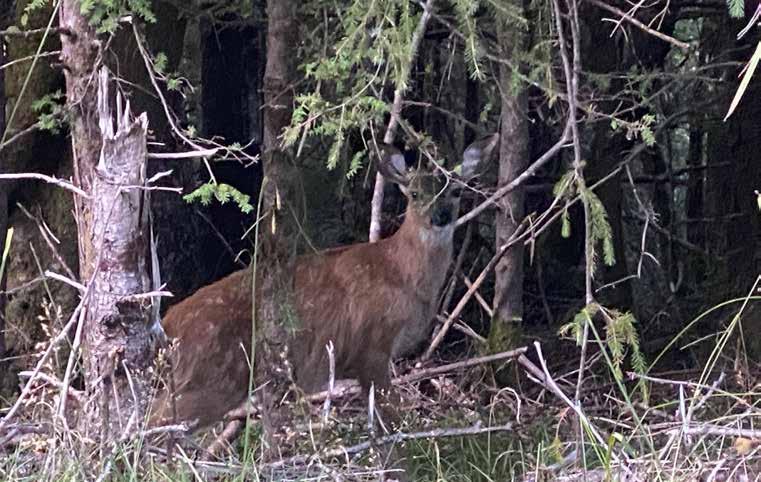
My plan is to launch from the beach at the end of our driveway where I’ll catch a lift on the incoming tide. I’ll ride for a few hours several miles upstream in the soggy deer woods, then I’ll float downstream on the falling tide. If all goes well, I’ll return with a deer strapped to my paddle board.
Coming from the open fir and pine forest of the Rockies, waterbased hunts in a moisture-laden world were something totally new to me. Waders and rain gear would keep me dry-ish, but what about the rest of the gear? Nomar Alaska solved the problem of keeping the rifle dry and afloat in the worst-case scenario with a waterproof rifle scabbard, but the rest of the gear? Well, like everything here, it will just have to get wet.
On the water the world seems upside-down as the reflections of the trees above disappear into a gray sky beneath my board. I float silently, barely paddling downstream, looking for spots to blind call. Even with the denuded vegetation, the deadfall and greenery is so thick that spot-and-stalk is rare here outside fresh clearcuts. Sitka blacktail does are renowned for coming in to fawn distress calls. Typically hunters would hope that a rut-crazed buck is hot on the tail, or just curious, because every wiley buck knows fawns mean does. But here, where the deer are an invasive pest, I am happy to harvest whatever offers itself up.
I nose the board into the grass at water’s edge, set up my shooting tripod with a decent view up and downstream, and make a few calls. I wait 15-20 minutes, send out a tending grunt to encourage any hung-up bucks, and wait a while longer. Then I get back on the water to the next spot. I paddle a while and repeat, float on, stop, and repeat.
By my fourth set I am resigned to more of the same ol’ nuthin’, but optimistically tuck back onto a log where I can sit with my
knees as a gun rest. At deer height I discover I can actually see farther into the bush. I barely get through two short bleats when a loud “PHOOOSH” echoes through the green darkness across the river, followed by snapping sticks, thuds and more snorts and wheezes. After years of whitetail hunting, my mind only sees the doe running like the wind in the opposite direction, but what really happens is awesome. The snapping sticks and huffing get closer, and closer, until finally a red-brown ghost appears inside the shelter of the forest 20 yards across the creek, and my crosshairs settle on the vitals of gorgeous Sitka blacktail doe.
After the boom the deer disappears into the mossy blowdown, and I settle back and soak in the “did that really just happen?” moment. This tiny deer brought as much excitement as my first bull elk. Putting away the rifle, I SUP across the creek, velcro the leash to a small tree, then tiptoe to where the deer stood. After a half dozen Sitkas, I have yet to find a drop of blood after the shot. Maybe there is just not much of it in these little deer, and they just fill up instead of leaking out? More experienced Sitka hunters try for neck and head shots, to ensure the deer goes down and minimize meat damage, as there is not much room behind the front shoulders for a clean shot on these diminutive deer.
I follow jumping deer tracks out the way the deer went, gridding and circling across fallen logs and muskeg patches. Nothing. I return and try a different escape lane. Nothing. Finally I fall back on the theory that injured animals often double back to where they came from, knowing it to be safe. I head back the way the deer came in, crawl over a few shoulder-height logs, and peer over into a mossy opening in the blowdown the size of a large tent, and find it, not 30 yards from the shot. Not a drop of blood.
I let out my own sigh of relief, give the deer a heartfelt haaw’aa
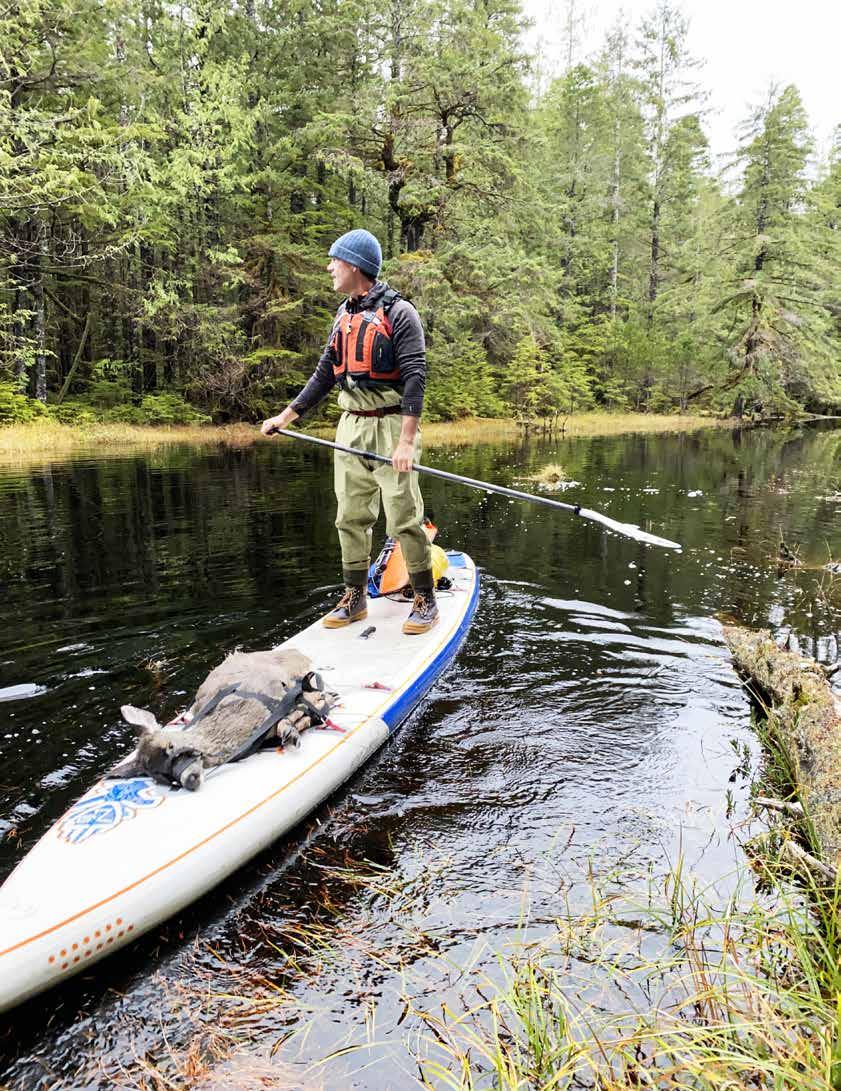
(thank you in Haida), and get to work cleaning it. Vibrant red blood soaks into a half-dozen types of moss and liverworts on the rich green forest floor, and nearby puddles offer convenient cleanup.
After passing the deer under some blowdown, it is an easy drag through open forest back to the river and my paddleboard. I slide my unloaded rifle back into the dry bag, load all my gear onto the stern, then fold the little deer up and to strap to the bow. Then I begin an unforgettable SUP back upstream on the mirrored world of the river toward the road, a hunt of a lifetime in the books and a month of tasty venison tacos, pasta sauce, burgers and kebabs at my feet.
BHA member Dave Quinn is a biologist, writer, outdoor educator and wilderness guide based in Kimberley, British Columbia, on a year-long home exchange with his family in Haida Gwaii. He is driven by a firm belief that we need large, intact, quiet wilderness as much as our wild neighbors do, and his work centers on connecting youth to the wild to help ensure generations of stewardship.

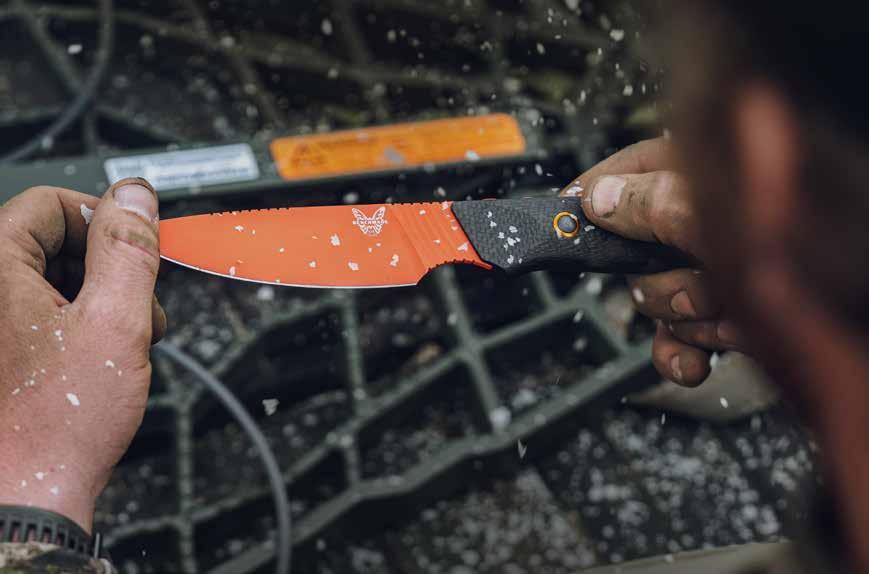
When you step into the field, anything can happen. Weather rolls in and conditions change, the day gets shorter, and the trail feels longer. Set yourself up for a successful packout with the 15600OR Raghorn®—a performance-driven fixed blade for effortlessly skinning, field dressing, and breaking down your game.
Benchmade.com
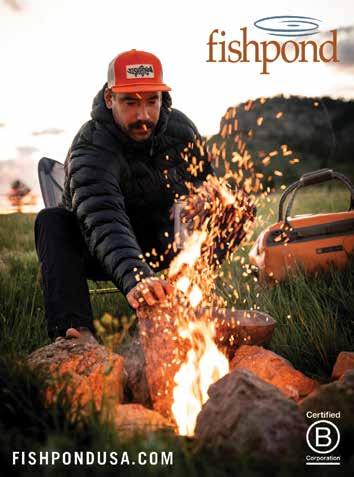


MAXIMIZED VERSATILITY
Based on new revolutionary material technology, R8 Core is designed with a forward-thinking lens of what we’re seeing out on the water where one rod needs to show even greater range.
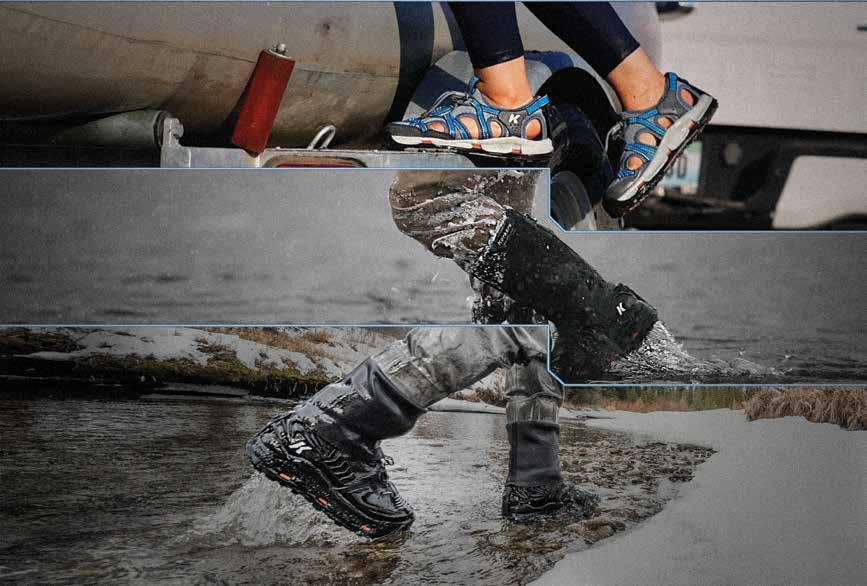

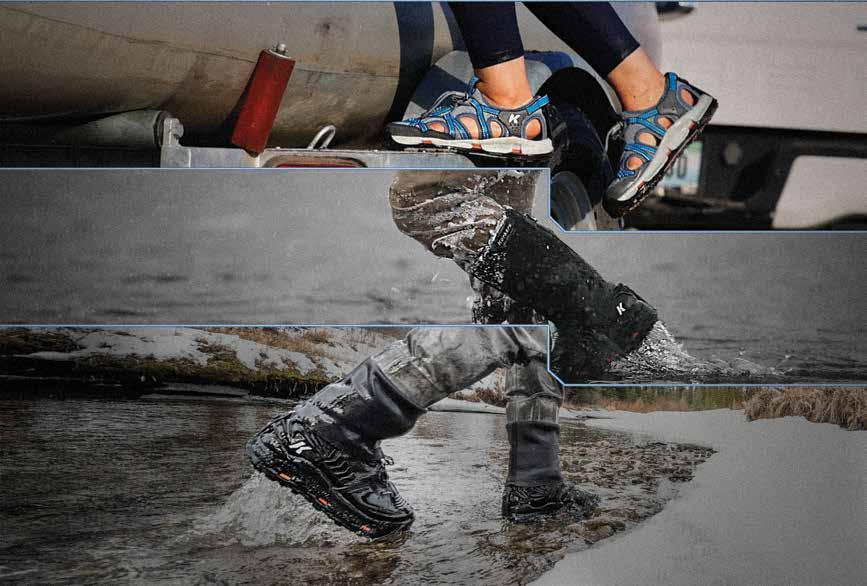


When the robins start to sing as I crest the ridge, I know I’ve made the long climb just in time for my appointment, if one is to be had. These may be the first bird calls I look forward to on the opening morning of turkey season, but more are quick to follow: chatter from northbound geese high overhead, accelerating putt-putts from a ruffed grouse drumming down the hill behind me, a ratcheting cry from a sandhill crane that could be over a mile away and finally the bizarre whistle of air rushing through the wings of a courting snipe. I look forward to this avian chorus every spring. But, however enthralling these sounds may be, none is the one for which my ears are searching.
Just as nature has confirmed my arrival at the right time, she soon announces that I have also arrived at the right place. Early sunlight swelling in the eastern sky reveals purple pasque flowers dotting the mountain meadow in front of me. Years earlier I started calling these lovely blossoms turkey flowers, since they seem to erupt at just the same elevation our turkeys have reached as they move uphill behind the receding snowline.
However, even perfect conditions are no guarantee of finding
birds; not in this terrain, where turkeys range through the hills as widely as elk. But with perfect acoustics on this calm, clear morning, I feel confident as I start down the ridge offering occasional inquisitive yelps into the deep, timbered coulees on either side.

A lot of that terrain is steep and looks a lot like good elk habitat. In fact it is good elk habitat, and I’ve killed bulls in the fall in the same place I shot my gobbler in the spring.
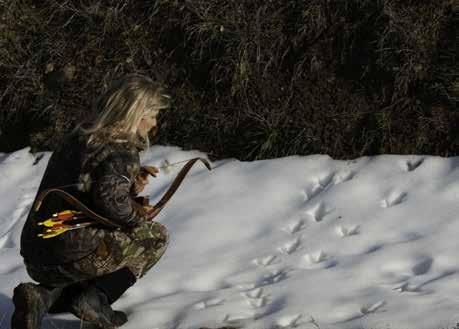
The pasque flowers provide an interesting introduction to the history of wild turkeys in Montana.
Turkeys were not native to these hills, probably because they could not survive our winters’ heavy snow cover. Lewis and Clark made no mention of them this far west, and in 1833 the visiting hunter Prince Maximillian declared South Dakota the limit of their range. Agriculture eventually provided relief from winter in the form of feedlots, in which I’ve seen flocks of a hundred birds gathered after a heavy snowfall.
Maximillian’s observations were made on the eastern turkey subspecies, but the Montana Department of Fish and Game (as it was then known) decided that Merriam’s turkeys from Colorado would make a better fit here. In 1954, biologists began experimental turkey transplants around the state. I can see the site of the first one from my deck. Although no one knew just what to expect, the birds thrived, and the rest is history.
Native Americans certainly hunted turkeys along the eastern seaboard, and European settler’s turkey hunting traditions date almost all the way back to first arrival. However, much of what we think we know about those early days turns out to be myth. Our traditional Thanksgiving provides us with a wonderful holiday during prime hunting season and an opportunity to eat what for most of us will be the only turkey of the year. Unfortunately, the original event upon which all this lore is based almost certainly never took place. Contemporary records make little mention of pilgrims eating turkey, likely because they were too proud to learn Native hunting techniques and were carrying firearms even less efficient than the traditional bows with which I have hunted turkeys exclusively for over 40 years.
Wild turkeys have long enjoyed a reputation for wariness and keen vision, which can make them a hard quarry with any weapon, but sometimes they surprise you. By the time Lori and I were thinking about getting married, she had heard endless discussions about how difficult it was to kill a turkey with a bow. Her first turkey hunt took place on a warm May afternoon, hardly prime time for a turkey hunt. It is possible that I had other things on my mind than killing a turkey. After hiking an hour up into some nearby foothills, we heard a gobble while we were lounging around the edge of a mountain meadow awash in wildflowers.
When I offered a yelp in reply, the tom answered immediately,
and it soon became apparent that he was inbound and approaching fast.
I had violated one of my important rules that applies when calling anything, from moose to elk to whitetails: Never call unless you are ready for an immediate, aggressive response. Caught in the open, we made a mad dash for a little stand of Christmas trees. As soon as we reached them, I crawled out on hands and knees and hastily set up a pair of decoys. By the time I was back in the cover, we could see the two white semicircles of a strutting Merriam’s tail feathers approaching through the timber across the meadow.
I yelped twice more and then shut up, since we were obviously on the bird’s radar. When the bird began to spit and drag his wingtips between the two decoys, I rose to one knee, released an arrow, and hit the feather I was aiming at. The bird flopped once or twice and then lay dead in plain sight barely 15 yards away. “What was so hard about that?” Lori asked with a laugh.
She discovered the truth when she started hunting turkeys with her own bow several years later.
After this rambling introduction, I’m going to get to the heart of the matter: the many ways in which hunting turkeys in the Mountain West differs from turkey hunting as practiced by friends in other parts of the country. This is not to imply that one scenario is better or more challenging than the other. They are just different –in ways that might be interesting to traditional turkey hunters who also love the backcountry.
During the spring, our birds are moving targets. While concentrated at low elevations during the winter, they disperse back to their preferred ponderosa pine habitat once the snow starts to melt. Over the years, I have discovered multiple spots where they often like to strut, but I can never count on finding them where they are supposed to be. Most of my friends who hunt turkeys in the South can locate them easily, set up in a good blind and start hunting at dawn. In contrast, I may hike as many miles to find turkeys as I do on a typical elk hunt. A lot of that terrain is steep and looks a lot like good elk habitat. In fact it is good elk habitat, and I’ve killed bulls in the fall in the same place I shot my gobbler in the spring.

The need to cover a lot of ground impacts the way I hunt once I get there. I don’t dispute that pop-up blinds are an efficient way to kill turkeys with a bow, but I just don’t like them. This is purely a personal choice and has no implications for other hunters, but they make me feel confined and I find them hard to shoot from. Furthermore, I rarely feel like packing one miles up a mountain. Fortunately, natural “blinds” are abundant in typical mountain habitat. There is no better hiding place than a downed ponderosa pine that still has some needles on it, whether they are green or brown.
I am a firm believer in the value of turkey decoys, especially when hunting with a bow. I don’t know if they add much to good calling when it comes to drawing birds into range, but decoys do help get toms in just the spot you need them for a good shot. I have three decoys made of a soft, rubber-like material (and I don’t even know the brand) that I can easily strap to the back of my daypack. I also pack a strip of netting in case my natural blind needs some fleshing out.
I know good hunters who have spent years trying unsuccessfully to kill a gobbler with a bow, and I admire their determination. Largely because of experience and familiarity with the terrain, I kill one almost every spring now, but it’s not because I’m a great turkey hunter. I live in an area with lots of turkeys that receive little hunting pressure and have likely never heard a turkey call. (I prefer a diaphragm because this type of call leaves both hands free to handle a bow.)
No matter where you hunt turkeys or what weapon you choose to hunt them with, there is always magic in the spring ritual that defines the opening day: Organize your gear the night before, rise to the rude blare of the alarm clock, burn your mouth on the first sip of hot coffee, and head out as a faint glow in the eastern sky announces dawn’s impending arrival. Sometimes getting into the field requires a 20-mile drive, but it might involve nothing more than setting off on foot from my house. With luck and a little hiking, I’ll hear the first gobble of the year within the hour, at which point, to paraphrase Sherlock Holmes, the game will be afoot.
One way or another, I will be roaming free in the mountains, certain that I have survived another Rocky Mountain winter.
BHA life members and Ted Trueblood Award recipients
Don Thomas and his wife Lori live in rural Montana. Their kids are grown, replaced by Labrador retrievers and German wirehair pointers. Don writes regularly about fly fishing, wingshooting, bowhunting and wildlife issues for numerous magazines, often accompanied by Lori’s photography. He has just finished his 20th book, Traditional Bows and Wild Places, which discusses more wildlife and wilderness material than actual hunting.
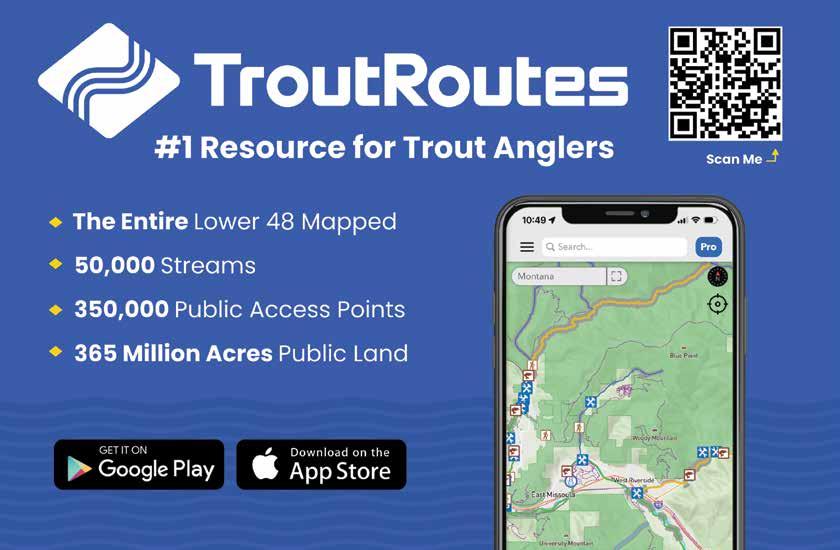
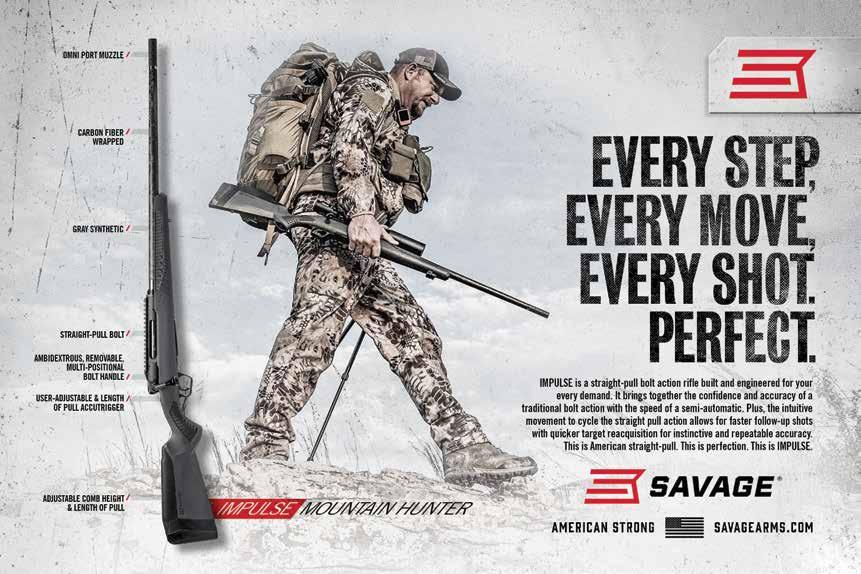


“All significant human activities are conducted under a set of ethical principles that guide appropriate behavior. Depending on the activity, these principles are molded into laws when specific behavior is required. Without ethics and laws, most activities would become unsafe and unacceptable to both those who participate in them and those who do not.”
-The Boone and Crockett Club BY GENEVIÈVE JOËLLE VILLAMIZARI love to drive. There’s a section of I-70 East between Copper Mountain and Frisco that kicks ass – tight curves on the valley floor, jaw-dropping granite mountains, and from time to time, a posse of drivers that flow and weave together beautifully. I’ve found myself hitting 90 by accident and pumping the brakes –with the wetlands and willows, I always expect to see a moose. With the steady stream of traffic, I know I won’t. But there’s always the chance of wildlife on the highway, so I prefer to keep it cool.
Hunting has the principle of Fair Chase, but driving doesn’t. And that has significant implications for hunters. Even more so for wildlife. In Colorado, the Department of Transportation documented 7,338 reported animals killed by motorists from June 2022 to June 2023.
CDOT’s data listed 47 mountain lions, 59 moose, 93 pronghorn, 246 bears, 653 elk and 4,588 deer among the dead.
In June of 2022, I encountered one of those elk reported to CDOT.
I was on my way to a bluegrass festival. My truck was packed with camping gear and food for three days. My spirits were high. But I never made it. Instead, I encountered a scene so violently shocking, my world spun out.
Sheets of blood draped the cow elk. In the whirling emergency lights, it went from black and white to technicolor. Grimacing and wide eyed, she flailed on two broken left legs, attempting to rise. I had never seen anything like this – why hadn’t she been put down yet? Unable to shake it, I went back. She was down, head sideways on the gravel. They had finally shot her.
I had hunted hard the season before but came up empty. On that summer night, I didn’t want her “to go to waste.” I secured a salvage permit. Mountain music, friends and dancing felt a long way off as I knelt alone in the wet grass. I ran my hands along her body, apologizing for our cars, our roads. Our careless ways. The violence of her death was tangible, in the gravel and dirt embedded in her mane. In the rolling and grinding of shattered leg bones. In the sticky, red patches of muscle where her hide had erupted. An unnatural angle of bone at her belly felt especially gruesome. I slowly yanked my hand back, dismayed. Head bowed, knife in hand, I made my first cut.
It was the oddest sensation, butchering in June. Under the beam of my headlamp, with cold fingers and only a snap-blade X-Acto, she was a lot to process.
One, three-thirty, four in the morning, and no one stopped. Or slowed, not even at the cockeyed sight of my hastily parked pickup, headlights askew. In fact, a dismaying number of drivers had gunned it, their roars just toasting my nervous system. In the back of my mind, I couldn’t help but think, “What the **** is wrong with people?”
With her final quarter in the bed of the truck, I knew I had to do it. Not just for her tenderloins, but also for mercy. For honoring.
Blade against the velvet skin of her groin, I unzipped her belly.
I knew what I’d find.
Her side collapsed as a heavy mass larger than any organ slid out. Slicing through the criss-crossed layers of thin, sheeted muscle, I opened first her uterus, and then a translucent, milky membrane. Fluid gushed. A miniature dark hoof; tender curve of back. I wiped at the calf’s face, my chin trembling. Took in its wet, black lashes beneath eyes that would never open … almost an inch long. I marveled at Nature’s perfection. And finally, I sobbed. I’ve carried life in my own belly.
I hauled the mama’s remains further from the highway and placed her calf by her face. Soaked through by the dew and caked in blood, I crawled into the cab of my truck and passed out.
Hunters are stigmatized for killing animals, but not enough of us are calling out the elephant in the room: motorists.
I was 21 when I received my driver’s license – older than most. It was, perhaps, too easy. I studied a pamphlet of rules – once. I took three driving lessons and one test. Thirty-two years later, that rule book isn’t even a memory of a memory. I scarcely remember taking the test. Nothing in society treated this as the rite of passage that it is. And I certainly don’t have a community of fellow avid drivers, near or far, that keeps me true. Do any of us?
Hunting keeps me true. I was 28 when I earned my hunter safety card. I’ve lost many a driver’s license, but I still have that original card: blaze orange, burnished and faded, the paper worn smooth as satin.
When I returned two days later, the calf was gone, consumed by the coyotes that frequent the pasture. The plastic shards and glass from the Honda will remain indefinitely.
That mama elk pulled at me all summer, her dwindling carcass a symbol of sorts. I pulled over every few days, watching coyotes, magpies, ravens – even a black capped chickadee – feed on her. I came to realize that her death wasn’t all waste — such an anthropocentric conceit. She was the circle of life, now feeding so many, not just me. Larvae blossomed in her eyes and ears. Mushrooms grew in the dim cavern of her ribcage. She was returning to earth. Daisies and salsify, clover and alfalfa marked the days of her decay.
Within weeks, my neighbor hit and killed another in the same spot. It had been long past dusk. Still calving season – and the river was on the other side of the highway. What didn’t he understand about the wildlife crossing sign?
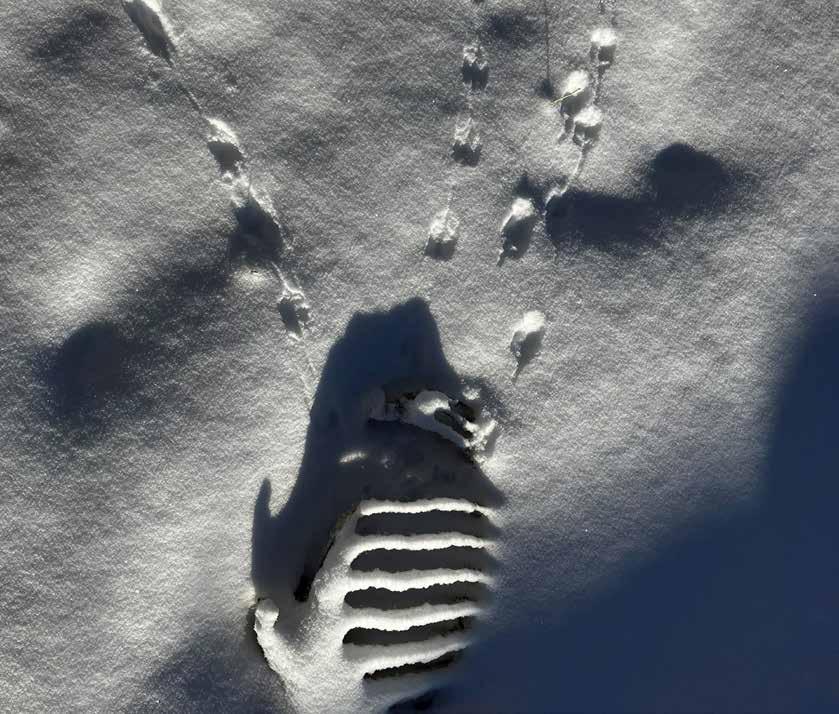
It felt senseless. Needless. As the months passed and the bodies piled up, so did my anger.

The tenets of Fair Chase changed the course of human behavior. Before Teddy Roosevelt, before the Boone and Crockett Club, hunting was everyone for themselves with no thought to the shared resource – think bison, passenger pigeons.
Do drivers today even make the connection between prime habitat and living creatures? Are mountain towns so full of urbanites that the culture has been lost?
Feeling especially resentful once, I watched several motorists fly past me and up the highway, nose to ass in an aggressive little knot. When one pulled over just before the canyon, I couldn’t help myself. I pulled up next to his sporty little SUV in my F-250 and leaned around my dog towards my open passenger window.
“Hi, there. How ya doing?” I asked him, smiling.
He was young; maybe 35. Looked city. Looked frazzled.
“Agh, I’m alright,” he said, ruffing his hair.
“I’m just curious why you blew past me back there – only to pull over right here. Are you aware of how much wildlife there is here?” I asked gently – being rude wasn’t going to change behaviors. “This is a migration area. There’s a lot of elk and deer here.”
“I don’t know. … I think I’m lost,” he admitted, an outsider armed in plastic, alloys and ignorance.
But it’s also the local diesel, rolling coal. It’s the taupe Tacoma with mountain bikes and a month of paychecks in overland gear. It’s the 2023 Subaru Outback passing on a double solid with the Cayennes, the Benzes and the Teslas. It’s the Sprinter doing 80 in a 55 like everyone else.
Hunter-Ed.com states that “Fair chase rules make sure hunters have no unfair advantage over wild game by balancing the skills and equipment of the hunter with the abilities of the animal to escape.”
What chance of escape does a wild animal have against “equipment” like that?
Summer rolled into autumn. Collecting grama seed in the right of way, I found someone’s dog, a ½-inch-thick, burnished pancake. Its teeth were showing like a flattened teratoma. Someone used to scratch behind its ears and exclaim, “Who’s a good boy?” Harvesting aster seed, I found a housecat, all silky and rigid – asleep forever.
Wild turkeys were feasting on crabapples after an early snow dump. I had been enjoying them from my parked truck, windows open for the sound effects. I watched as one approached the road and stepped out – the approaching engine didn’t slow or swerve. Contact was a loud CRACK. I ran out to its body as feathers fell like black snow. The truck stopped about 800 yards away and turned back. As I lifted the turkey to give it some dignity, she exploded from my arms, running to the cover of a thicket. Based on the blood, she’d probably die of internal injuries.
He pulled up to me. I bent and peered at his shattered grille long enough to relax my face and find a calm voice. I stood slowly, passed him a piece of headlight housing through his now open passenger window.
“Man, that really did some damage. You okay?”
We talked for a bit. He was late for work. Was an addiction counselor in town. We’re all types … odds are, we’ve all hit an animal, and then we learn. I could tell he learned.

it dwarfed our furniture. Found too many deer to count. A heifer. A rabbit whose head popped clean off. Skunks, squirrels, foxes, raccoons. A coyote whom I dissected, curious to see what she was eating. From belly to rectum, I teased out 38 rodents.The bear electrified me – I had noticed its teeth, first, thinking, mountain lion? I had to dig through snow and slush, revealing furry paws and claws to confirm. How does someone hit a 400-pound animal?
The tenets of Fair Chase changed the course of human behavior. Before Teddy Roosevelt, before the Boone and Crockett Club, hunting was everyone for themselves with no thought to the shared resource – think bison, passenger pigeons.
To the passerby today, a carcass here, an accident there – it doesn’t tally. Doesn’t strike a chord. Doesn’t affect a change in driving habits.
Smokey the Bear reduced forest fires. Rosie the Riveter put women in factories. A weeping Native American reduced litter.
Overpasses, underpasses, wildlife fencing – they’re critical tools but not a silver bullet. An overpass is upwards of $20 million. These are targeted solutions for high-collision locations – often in migration corridors. But wildlife cross roads everywhere.
and more skilled than they have ever been. I have lived with wild turkeys, coyotes, elk and deer. I’ve come to know the places where they cross the highway. The places where they hang with their calves. I’ve come to see how interwoven all of them and all of us truly are. It’s excruciating to have this awareness, these experiences – the duality of tragedy and wonder – and to also see the public around me move through their days with so little thought for the wildlife that keeps these lands so functionally alive.
Can we hunters be the change for vehicle wildlife collisions? What can we do? What can you do?
Writer, ecological landscape designer, solo flyer mama – BHA member Geneviève Joëlle Villamizar is, above all, a mountain woman.



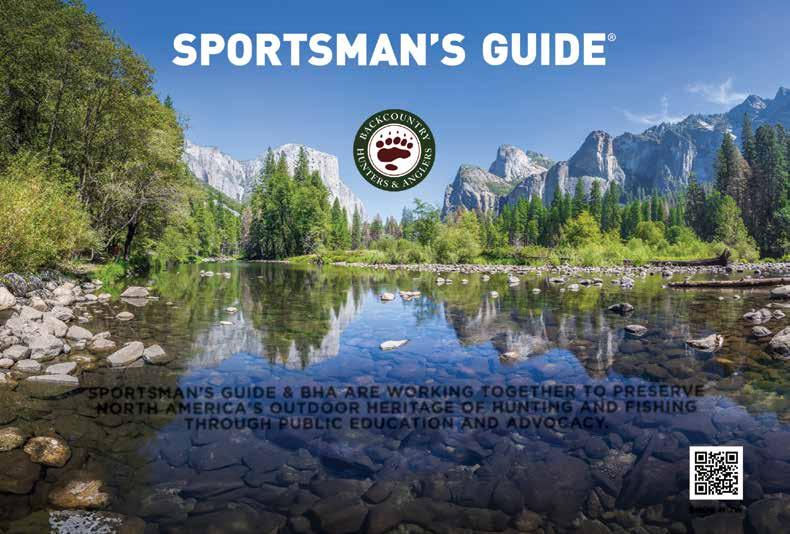



Lightweight and easy to transport, the new-for-2024 NRS Approach redefines the limits of where a boat can take you. Constructed with durable welded PVC, it can handle the abrasion of shallow streams and overgrown banks. A combination of 16-inch tubes and a thick drop-stitch insert floor enhances buoyancy, letting the Approach draft in skinny water, opening access to remote waters other boats can’t reach. Featuring an innovative slot-rail frame system, anglers can make on-the-fly adjustments to seat, oar and accessory placement. An integrated dry box seat platform provides convenient external trays and internal waterproof storage compartments keeping gear dry, organized, and eliminating tripping hazards. The Approach is designed to fit between the wheel wells of a full-size truck or ride on the roof of a Jeep or SUV. When you don’t need a trailer to haul it or a ramp to launch it, you can fish wherever the adventure takes you.

Scan to see all Approach packages and learn more.
nrs.com
Proud partner of Backcountry Hunters & Anglers
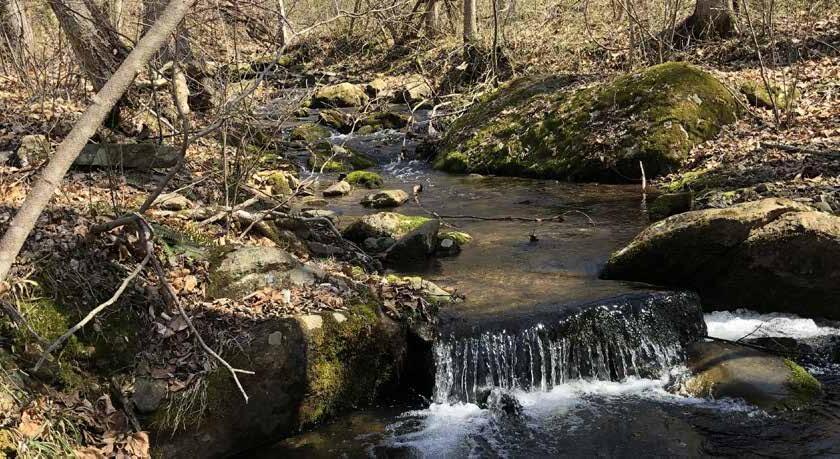
I’ve attempted to introduce friends and family to the brookie fishing in my favorite tiny streams that flow through the George Washington National Forest. The end result is the same every time: I return alone to enjoy the solitude. Truth is, few really “get it” when it comes to my infatuation with Virginia’s only native trout and the diminutive waters they call home. But I find joy in brookie fishing the small, sometimes very small, streams that flow through our public lands of the Appalachian Mountains.
I have no qualms with fishing for hatchery-raised trout, and I too enjoy the struggle of bringing a large, fat fish to the net. But with large numbers of fish comes large numbers of anglers. You know the scene – crowded pools surrounded by people looking to fill a stringer. Combat fishing gets old after a while. There is comfort in solitude.
I have been enjoying my personal brookie circuit of five streams each March for about a dozen years, and in that time I have yet to see another angler – not one! I should mention that all of the streams on my circuit are within a 30-minute drive from my home, and I live about 70 miles from Washington D.C. and the Northern Virginia metro area.
Full disclosure here: I do see hikers and dog walkers often. They usually give my garb and fly rod an up-and-down once-over look followed by an inquisitive, “Are there fish in there?” Not wanting to create competition or company, I then stretch out my thumb and pointer finger with my reply, “A few.” Actually, I don’t mind the company of hikers. I have yet to meet a rude one, and they seem to be after the same thing I am.
Native brook trout refuse to live in ugly places. Instead they opt for wilderness, unscarred by human impact – or maybe that’s just where I look for them. Either way, I would suggest searching for brookies in cold, clean streams that flow through undeveloped land. The George Washington National Forest provides over a million acres of this. Enjoy the world of miniature waterfalls, cascades and plunge pools.
High on my list for reasons to complete the Brookie Circuit is
the beauty of the fish themselves. Everyone notices the sunrise underside and fins framed in white. But closer inspection reveals tiny red dots with perfect blue halos. This beauty can only be appreciated if the trout is briefly held and admired. These skittish fish are all but invisible when lying in wait. Their worm-like topside pattern and secretive nature keep them well hidden until brought to your wet hand. Then, and only then, you see and appreciate one of God’s greatest creations – but only briefly, followed by a release back to where it belongs.
Brookies are willing to take almost anything that looks remotely edible. I carry a very basic ensemble of nymphs and dry flies in sizes 12 to 16. I don’t know the Latin names for any of the bugs they imitate, and I have a rudimentary understanding of hatch timing at best. My rule for fly selection is simple: Don’t spook the fish.
The trout in the tiny streams of The Brookie Circuit will not tolerate stomping, splashing or excessive false casting – no room for that anyway. As long as I don’t send them swimming for cover, they are generally willing to take my offering.
These public-land trout are not large. Personally, I have broken the one-foot marker only twice. The phrase “get them on the reel” means little to me. Renowned fly-fishing author John Gierach once said, “Maybe your stature as a fly fisherman isn’t determined by how big a trout you can catch, but by how small a trout you can catch without being disappointed.”
The George Washington National Forest, GW for short, is vast by eastern standards. A place where old-growth forest offers shade and a bit of relief in our warming world. A place where young hemlock trees still grow, despite the beetles’ best efforts. GW offers room to roam in an area of our country where too many trees are covered with yellow signs or purple paint. You are free to go as far as desire will take you. The streams are cool and clean. Often no worn footpath penetrates the laurel-choked undergrowth, and you get the feeling your fly is the first fake some trout have ever seen. What more could anyone ask for?
BHA member Chuck Way enjoys outings into our woods and waters pursing feather and fin along with peace and rejuvenation.
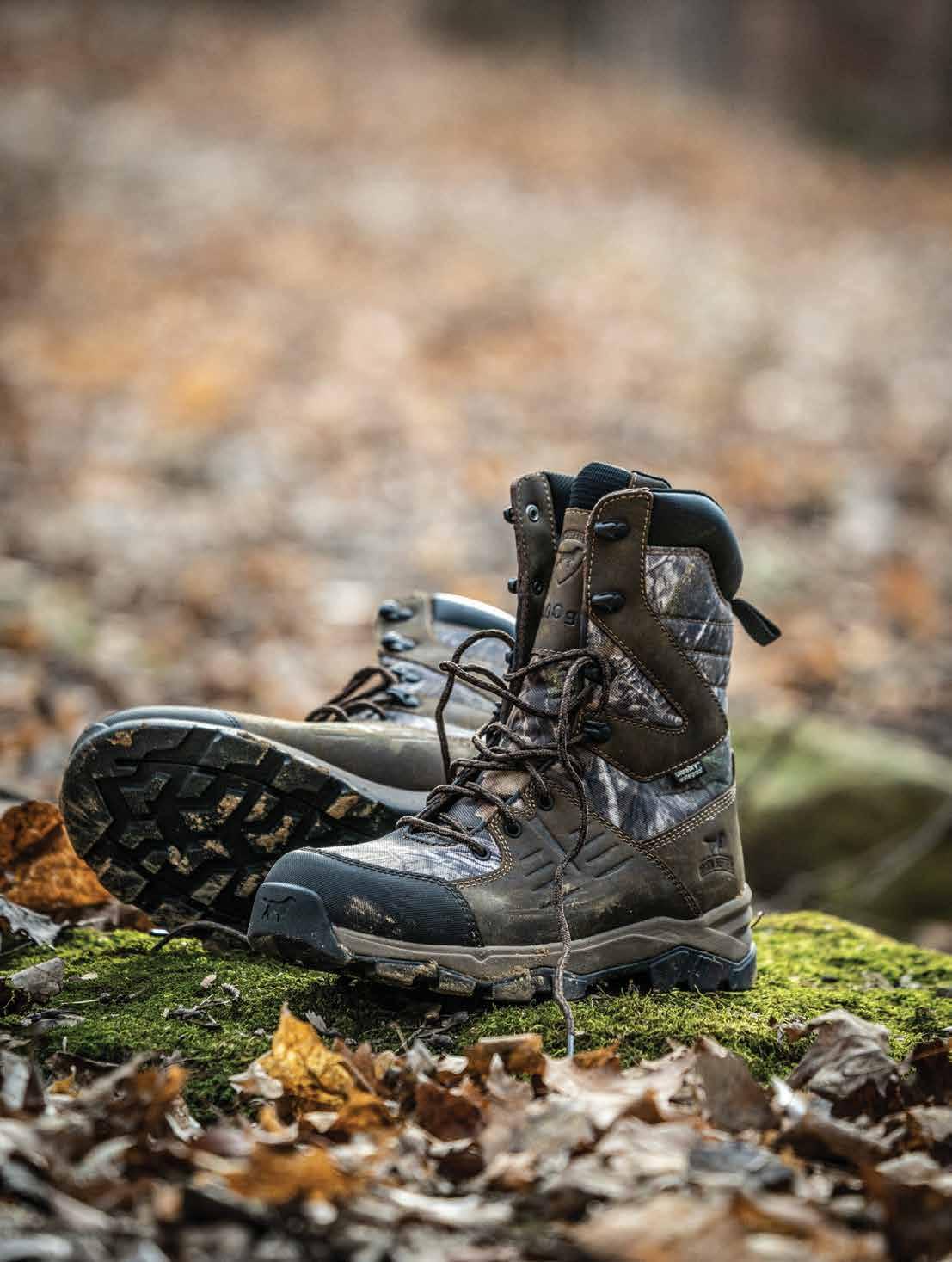
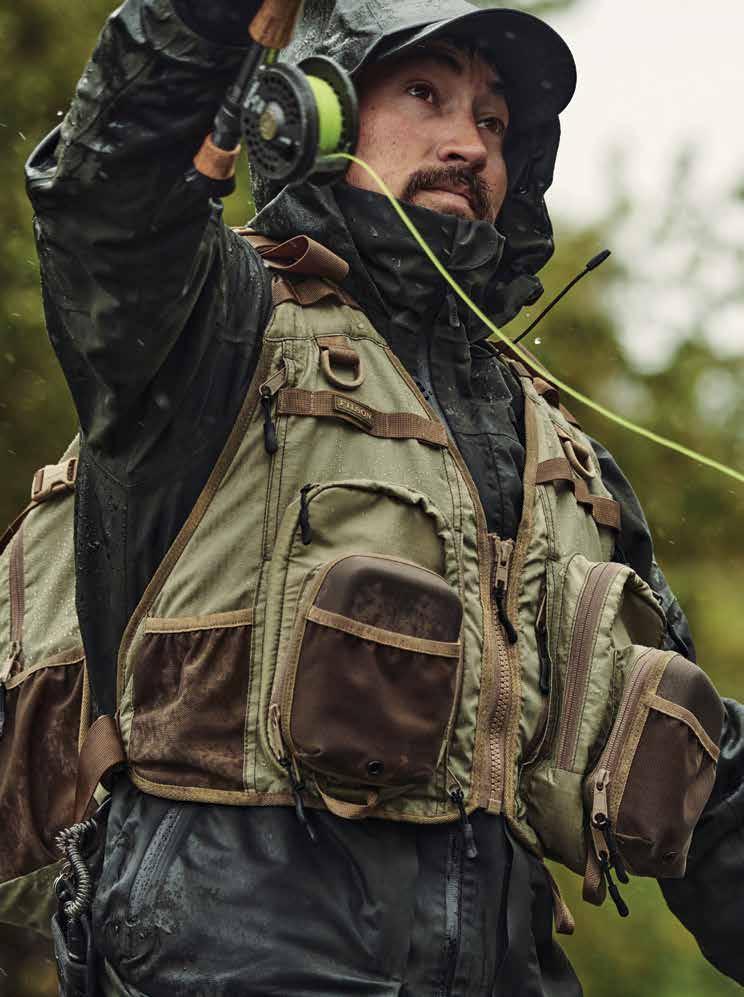

It was a beautiful afternoon. After the morning’s rain, the air was crisp and electric. The vibrant green of the low hills of the Coast Range made a striking contrast to the purple-and-gray skies. Even though it was later in the day, it felt like a promising afternoon for turkeys. We’d already seen two big toms and several hens browsing on the oak-studded hills on the way to the trailhead.
We parked, got into our camo, and started slowly making our way up the old fire road to the stand of oaks I’d scouted a few weeks prior. We didn’t go far, and we took our time; after all, my hunting companion was 90.
My grandmother, Naomi (“Nomi” to my generation), has always been an adventurous person. Raised by Russian Jewish immigrants in Queens in the 1930s, she grew up exploring every corner of New York City. As an adult, she was involved in school desegregation in Chicago in the 50s and 60s; caused a minor scandal by divorcing her husband in the 80s; and spent much of her retirement traveling the world. But she’s unequivocally a “city person” – camping, hiking, and hunting have never been of interest to her.
A few weeks before her 90th birthday, I called Nomi to catch up. We’re close: I’m her only granddaughter, and we’re both voracious
and omnivorous readers. I grew up visiting her in Chicago every summer, and those visits were a highlight of my year: playing epic games of Monopoly, visiting museums, watching lightning over Lake Michigan from her apartment’s living room window. I followed in her footsteps becoming a high school teacher, and we share a deep love of learning.
During our call, I jokingly asked her if she’d want to join me for a special 90th birthday celebration: turkey hunting. Without missing a beat, she replied, “That sounds wonderful!”
A few weeks later, I picked her up from her retirement community in Davis and drove to the low, rolling hills an hour to the west. For having never gone hunting, she was very relaxed, her biggest concern was timing. “I love you, but I will not get up before sunrise,” she had informed me during our planning call.
We set up our blind and settled in to wait. Nomi chuckled to herself as she tried on my various accessories: a ghillie-style gaiter, camo cap, flip-mitt gloves. I’ve never been one for fashion, but look, she teased, here I was with a whole closet of special outfits.
As we waited, Nomi asked why I’d gotten into hunting. I grew
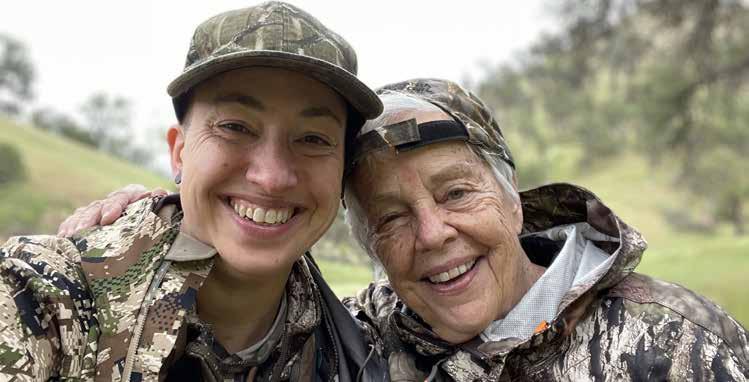
up camping and spending time outside and had gone fishing occasionally with my dad. But no one in my family hunts, and when I took it up in my 20s, it resulted in more than a few raised eyebrows.
My grandmother gets the one general appeal of hunting: eating meat that isn’t from a factory farm. That wasn’t her question; she was asking, why do this thing that is so outside of the norm for our family and community? What’s the appeal of this pursuit that requires special gear, early rising, lots of driving and a low success rate?
As I thought about how to answer that, a series of moments flashed through my mind: the first morning I went duck hunting, and the delight I felt as the sun rose over the flooded cornfields of the Sacramento Delta, making them glow a vibrant purple; taking a break from turkey scouting in the Sierra foothills to watch coyote pups play among wildflowers; packing in during deer season in a rainstorm, escorted by harriers cruising just over my head as I walked. I thought about the cacophony of thousands of waterfowl circling the Delta before sunrise; the nights stargazing before crawling into the back of my truck to get some sleep before the 3 a.m. alarm; the jolt of hearing a thundering gobble over a ridge after hours of quiet waiting. How could I translate those moments for my city-loving grandmother?
Thinking about the things that she and I share, I said, “I think the appeal of hunting, for me, is about learning.” I told her how hunting has been a way for me to get really, deeply involved in the physical place where I live. How I know so much more about ecology, resource management and wildlife biology than I did before I started hunting. How hunting has taken me to corners of my state that I would never have seen otherwise. How it’s broadened my social circles and given me chances to talk to and spend time with folks I might never have met in other circumstances. How it’s given me more incredible wildlife encounters than I can count.
Nomi nodded thoughtfully. “It’s a way for you to keep learning, and to be outside at the same time.” She looked satisfied. “That makes a lot of sense.”
We sat for a while, and then she looked askance at my gun. In our planning process, she told me she’d gone 10 decades without holding a gun, and didn’t ever plan to. “Okay, fine, let me hold it,” she said. I laughed and unloaded it before handing it over. She posed for a picture and laughed again. “Ninety is a good age to try new things!”
I’d warned Nomi not to expect to see turkeys on an afternoon hunt, but we still went through all the motions. I showed her how to use different types of calls. She took right to the slate call, gently trying it out until she decided it sounded “right.”
She wasn’t the only one to think that: from over a hill, we heard a gobble in response. We looked at each other, eyes wide. Over the next 10 minutes, Nomi called a tom in from half a mile away. We heard him just on top of the hill above us. But at that point, he wised up, quieted down and refused to make an appearance. We looked at each other again and laughed with delight. “Okay, I get it now,” Nomi smiled.
We left without a turkey, but neither of us was disappointed. I’d gotten to share a magical afternoon with my extraordinary grandma. Always the learner, she was willing to embark on this outof-character adventure out of genuine curiosity, eager to see what hunting was all about, and why her granddaughter was so enamored with it. Hunting is many things to many people, but for me, the heart of it was what I got to do with Nomi that day: be outside, learn new things, hope for turkeys, and share all of that with people I care about.
BHA member Maya Brodkey is a lifelong Californian who, when she’s not reading, can be found chasing turkeys and small game, backpacking in the Sierras or taking photos of her rescue dogs in portrait mode.


Throw your run-and-gun game into high gear. This minimalistic call and gear-management system merges the simplicity of a hip pack with the specialized storage of a full-featured vest. When you strike a bird, simply drop the removable seat pad and spin the pack to the front of your body to access an array of call pockets. There’s plenty of room for other essentials, plus compression straps for added layers to equip you for unruly spring weather.
 BY WILLIS MATTISON
BY WILLIS MATTISON
“If that’s a moose’s antler, how can we get ’im up?” I whispered to Kenny. We were lying prone on the Arctic tundra, our rifles bridged across our daypacks in anticipation.
We didn’t know it, but spotting the off-white patch, barely visible on the brush-covered hillside above, positioned us to fulfill a decades-old pledge in a way that exceeded our wildest dreams. In 1958, two Minnesota teenage cousins had concocted a plan: Kenny would move to Alaska and get established. After graduating from high school, I’d follow, and we’d hunt big game like caribou, moose and brown bear in the wilds of the Brooks Range.
Kenny, who had retired from being an ice-road trucker in Fairbanks, finally called in 2009. “Willis, I’m in my seventies and you’re soon getting there. If we still wanna do that hunt, we’d better get ’er done.”
By 2011, we’d secured an outfitter with horses to pack food, gear and game. We’d also located a Fairbanks bush pilot. Flying beyond the Yukon Valley and crossing the Arctic Circle revealed an unblemished Brooks Range landscape below that began to satisfy a yearning in our souls.
Now here we were, finally living the dream.
Before we could decide on a tactic to get the bull up from his bed, a nearby cow stood up and nervously pranced back and forth across the ravine. I swung my scope back to the whitish patch to find the massive bull standing broadside 200 yards above us. Our jaws dropped at the sheer enormity of his body and gigantic rack.
Kenny already had an impressive moose mounted so we had agreed that any trophy bulls were mine. With his distinctively wry sense of humor, Kenny elbowed me and uttered just two words: “Your bull.”
I fired, striking the kill zone. Unfazed, the bull stood there. “Give ’im another,” Kenny said. My second round purposely hit shoulder bone, the distinctive report echoing back. He still didn’t go down.
“Let me give ’im one,” Kenny urged. Never wanting to be caught short of firepower, Kenny carried a Remington .425 magnum – an elephant gun compared to my Sako .300 short-mag. Only when his big gun roared did we see the slightest flinch from the giant animal.
Astounded but with wryness still intact, Kenny spawned another backwoods gem: “Willis, we don’t have enough gun!”
The bull took one step forward, legs buckling and came crashing down. The momentum of his fall carried him down the damp tundra slope toward us at amazing speed. Propelled by his flailing death throes, the huge animal kept sliding headfirst toward us. He finally came to a stop upside down, legs in the air, antlers buried deep in the soft tussocks. The mammoth beast now lay still, some 50 feet below where he fell.
We’ve all experienced the deflating phenomenon known as ground shrinkage when approaching what appeared to be a much bigger trophy. But when we walked up to this supreme specimen, we experienced “ground swelling” instead. What an animal! Far larger than we had judged through our scopes or could have imagined.
The next morning, I approached downwind of the kill site, stopping to sit on a hill where I could see the entire valley below. Kenny was hiking the five miles back to base camp to direct the outfitter and packtrain to the place where we had dressed, skinned and deboned the moose. I spent the next hour cautiously scanning the landscape for any sign of grizzlies that may have laid claim to our prize.
As I sat in that natural amphitheater, I marveled that the nearest human beings were my cousin and our outfitter some eight miles away, and then Arctic Village 50 miles further to the south. No humans, no roads, no traffic, no noise, no hubbub of civilization, just nature at her very finest. It was a moment of pure ecstasy with a powerful, compelling sense of “aloneness.”
Then as if on cue, snow began falling at the higher elevations. Like powdered sugar sifting over great mounds of bread pudding, it blanketed the peaks of the Brooks Range to the north. I soaked in
this magical scene with a deep sense of reverence, one I may never know again.
I’m not a religious person, but just a few days in this remote, pristine wilderness – so removed from any signs of human desecration – kindled in me an awe so profound as to create a lasting spiritual imprint. Soldiers say there are no atheists in foxholes. I would wager there are no hunters or anglers who, after experiencing the Brooks Range as we did, could escape feeling extraordinary gratitude to whatever higher power they may acknowledge.
As hunters and anglers, let’s ask ourselves: Do we have “enough gun” to defeat whatever may threaten the future of this Brooks paradise?
BHA member Willis Mattison is a professional ecologist and a retired regional director for the Minnesota Pollution Control Agency. Willis continues his work now voluntarily advocating for and advising citizen groups all across Minnesota at their interface with the science of conservation and with government agencies.
Editor’s note: This story won an essay contest put on by BHA’s Alaska chapter, which was conducted to garner support for Hunters & Anglers for the Brooks Range and to help defeat the proposed Ambler Road. More at huntfishbrooksrange.com
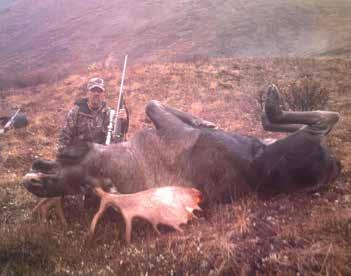
As hunters and anglers, let’s ask ourselves: Do we have “enough gun” to defeat whatever may threaten the future of this Brooks paradise? www.alpackaraft.com

The ultimate access tool for hard to reach backcountry waterways. Handmade by a skilled group of makers in our workshop nestled at the base of the San Juan Mountains, Alpacka Raft packrafts are meticulously designed using premium materials for a lifetime of use and adventure driven fun.
The author with his 60-plus-inch bull moose where it stopped sliding down the mountain on its back.ARMED FORCES INITIATIVE
Operation Phoenix Outdoors
ALASKA
Aziak Equipment
FishHound Expeditions
Forbidden Peak Brewery
PacBak
Wild Rivers Coffee Co.
COLORADO
Bar-U-Eat
Budges Wilderness Lodge
Burris Optics
Chopwood Mercantile
Cimarron Wealth Management
Gunnison Country Outfitters
Gunnison River Fly Shop
Harmels on the Taylor
Hilleberg
Hunters of Color
Hyperlite
I Bar Ranch
Kate’s Real Food
Kryptek
Laggis Design & Construction

Mayfly Project (Abel, Airflo, Ross Reels) Meyvn Creative
Nikwax
onX
Savage Arms
SAW Construction
Seek Outside
Sign Guys & Gal
Uncharted Outdoorswomen
Upslope
Ursack
Wright Angle Construction
IDAHO
Anglers Fly Shop
INDIANA
Flint Ridge Rifles
Moving Waters Outfitters
The Smoking Goose
Two Forks Guide Service
West Boggs Park
KENTUCKY
Wild Rivers Coffee Co.
MINNESOTA
Striker Brands
MISSOURI
Joe Ogden - Trophy Properties Realty & Auction
Mountain Top Motors
MONTANA
Adipose Boatworks
Aziak Equipment
Bella’s Bones
Cambie Taphouse + Coffee
Gastro Gnome
Genuine Ice Cream
Grizzly Liquor
Lucca Scariano, Edward Jones Financial Advisor
OnSite Energy
North Bridger Bison
Planetary Design
RightOnTrek
The Trail Head
Timberline Ace Hardware
Zink’s Big Sky Archery Targets
NEVADA
Elite Drywall
Legacy Lasers
Pure Water Systems
NEW ENGLAND
Big Game Waterfowl Guide Service
Bucktail Guide Service
CJ’s Charters
MTN Bird Media
Off Coast Outfitters
Ridgeline Athlete
Western Mountains Fly Fishing
NEW YORK
Tooher & Barone, LLP
OHIO
EnviroScience
The O2 Podcast
Siembida Custom Knives
Sisu Sauna
Western Reserve Land Conservancy
Wild Rivers Coffee Co.
UTAH
Cowboy Cauldron
Spinner Fall Guide Service
WEST VIRGINIA



SEASON 12


SCAN THE QR CODE AND BE THE FIRST TO KNOW WHEN THE SEASON IS LIVE.
THEMEATEATER.COM




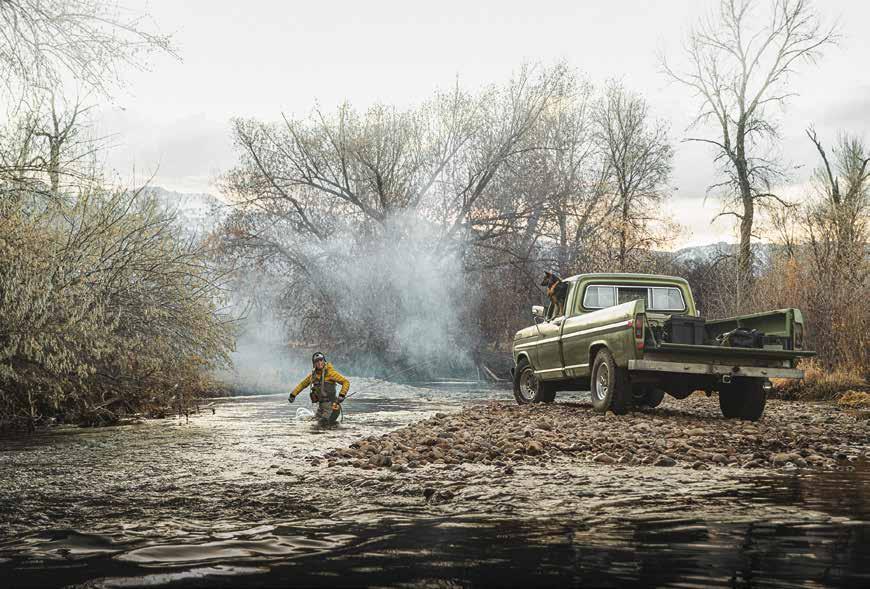
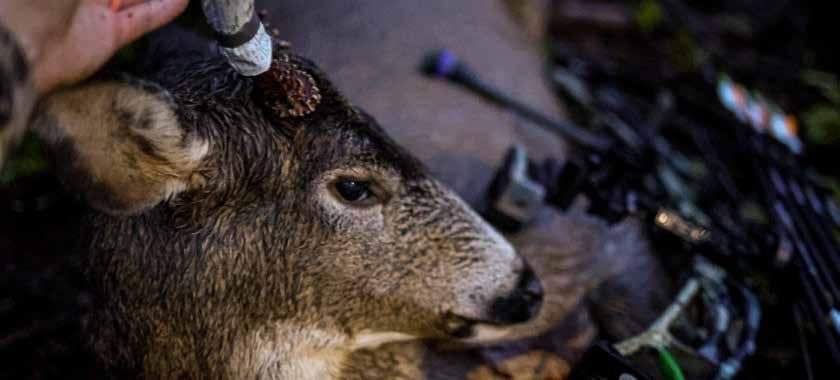
We came very close to losing hunting as we know it early in the last century. The public was aghast by the slaughter of wildlife at the hands of market hunters and, had things not changed, we would have wound up with few animals left to hunt and rapidly diminishing places in which to hunt. Hunting, were it to persist at all, would have become the privilege of those few who could afford private hunting estates, as was the case in most of Western Europe.
Three related movements saved the day: large areas, especially in the Midwest and the West, were declared public lands; states quickly adopted a set of game laws that, based on the rapid development of the science of game management, established seasons to protect game when they were breeding and raising young and set bag limits on the taking of game (including protecting females in select species to ensure robust reproduction); and lastly, spurred by socially prominent and politically well-connected hunters, a code of hunting ethics that came to be known as Fair Chase was widely promoted.
There was, early on, resistance to the game laws and to Fair Chase, especially from the market hunters and people who depended on game for subsistence, but it didn’t take long for hunters to realize that the game laws and management strategies paid off: Game populations began to increase, and public lands guaranteed access to rich and poor alike.
Hunting accidents, however, remained unacceptably high. Beginning in the 1940s, states began implementing hunter education programs, which emphasized both safety and Fair Chase. In effect, scientific game management was complemented by a “semi-science” of human management. The result was hunter attitudes and behaviors becoming more in line with broader changes in the general public’s regard for wildlife.
To be sure, hunters were not transformed into paragons of virtue any more than the broader changes in the public’s attitudes toward wild animals have stopped an accelerating loss of biodiversity. Poaching, the deliberate violation of game laws, continues to be a problem, and some forms of hunting, particularly trophy hunting and killing contests, have little public support. Indeed, even many hunters do not look favorably upon hunting purely for a trophy or killing contests.
For much of the last decades of the 20th century, the American tradition of democratic hunting seemed secure. Hunting accidents plummeted, game remained plentiful (in some places so much so as
to become a nuisance – think whitetail deer and geese), and public acceptance of hunting was high. But by the end of the last century, disturbing trends began to appear and gather momentum.
The list of challenging trends includes: a decline in hunting participation and support, loss of public access, public land development for energy use, overgrazing, urban sprawl and habitat fragmentation, and loss of wetlands – to name a few.
With our ranks aging and thinning, we need to think “beyond fair chase.” Hunting safely and obeying the law are no longer enough. The father of game management, Aldo Leopold, may have given us a way to think about what it will take to secure the American democratic hunting tradition. He knew we had to manage game and ourselves. In his classic collection of essays, A Sand County Almanac, he observed that “to keep every cog and wheel is the first precaution of intelligent tinkering.”
By “tinkering,” he clearly meant managing nature. The conservation movement that hunters were centrally involved in during the last century made great strides in saving many “cogs and wheels,” but there is more, much more, to do.
Fortunately, there are organizations supported by hunters, including BHA and some environmental organizations, that are actively working to restore habitat for wildlife – game and non-game. One notable example of a promising endeavor supported by these organizations and a number of Tribal nations is the movement to restore a keystone prairie species: bison.
Failure to expand the meaning of fair chase and to bolster the efforts to improve and protect habitat and maintain public access for hunters and other recreationists will almost certainly mean interest in hunting will continue to decline, and we will quickly resemble the European culture of hunting – the privilege of the wealthy who own large estates or who can afford to join exclusive clubs that own or lease hunting reserves for members only.
Simply put, we need to match our ability to manage game with a willingness to manage ourselves.
BHA member Jan Dizard is a board member of Orion and an avid bird hunter and fisherman. A retired professor, he lives in Chico, California. His most recent hunting-related book, Hunting: A Cultural History, (written with Mary Zeis Stange), was published by MIT Press in 2022.
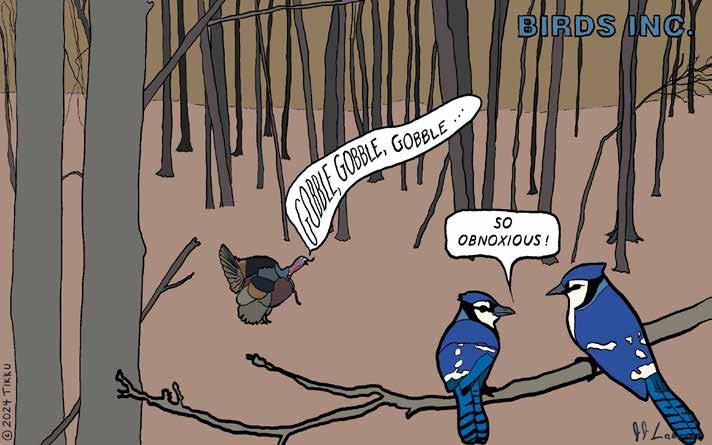
Comic: BHA member JJ Laberge is the creator of Clade & Genus, an online comic that focuses on the business of nature. His inspiration comes from spending time in the outdoors within Northern Ontario’s vast public lands pursuing whitetail deer, moose, ruffed grouse and woodcock. You can find Clade & Genus on Instagram @cladeandgenus or online at www.cladeandgenus.com
You can choose to make one donation at a time or become a sustaining donor and make monthly donations. All donations are fully tax-deductible and go toward securing the future of hunting and angling – ensuring that you have access to public lands and waters and healthy fish and wildlife habitat when you get there.
Our shared lands, our responsibility. We are working to diversify our funding sources to ensure that BHA will always be working on behalf of our wild public lands, waters and wildlife – for generations to come – by establishing a $1 million endowment. This investment will grow and become a perpetual funding stream that exists to support the future needs of our organization, regardless of any unpredictable challenges beyond our influence. Give today to form the root structure that will sustain BHA for many years to come.

Including Backcountry Hunters & Anglers in your plans for the future will create a long-lasting impact for our wild public lands, waters and wildlife. Your commitment to BHA will allow the next generation of conservation leaders to continue our work as part of your legacy. Including BHA in your will, trust, retirement account or life insurance policy is one of the easiest and quickest ways to support the future.
Support BHA every time you search online by using search engine Bing’s Give Mode.
Put your vehicle towards public lands and waters through Vehicles for Charity.
Please contact admin@backcountryhunters.org or visit backcountryhunters.org/donate for more ways to support BHA.




The little-known American pawpaw fruit, which was once a staple of Ozark and Appalachian cuisine, can be found in most southern, midwestern and eastern states — if you know where to look! In late August or early September, when you are out scouting for archery season and putting out stands, keep an eye out.
With a taste that resembles a banana crossed with mango, this native fruit is gaining popularity with outdoorsmen and women and can easily be substituted into your favorite recipes.
In the woods where I hunt here in Missouri, the leaves of the pawpaw tree stick out. They are much larger than anything else around, looking out of place with their oversized tropical appearance. I have also located colonies of pawpaw trees easily in mid-October, as the leaves turn yellow sooner than most species in my area, making them easy to spot.
Pawpaws have a natural custard-like texture. I love using them in a tart; the smooth consistency pairs well with the crumbly, flaky tart crust.
Speaking of crust, if you aren’t rendering down your ducks, you may want to set aside a few this season and do so. Having a few jars of duck fat on hand to make confit – or even to add when baking – is going to elevate any dish and impress your guests. Adding duck fat to your tart crust creates a perfectly flaky, savory counterpart to the sweet pawpaw filling.
(You can substitute your wild fat for butter in almost every recipe, just back it off a little. If a recipe calls for a ½ cup (115g) of butter, try 90g-100g of fat first to see how well it works. Depending on the ingredients, sometimes it will be an even substitution – but start out with less just to be safe.)
(When trying pawpaw for the first time, be mindful that they have been known to cause GI issues in some folks. So, don’t go for a second slice until you know how your body reacts to the first one. Some wild varieties of pawpaw can be a little bitter when cooked. If this is the case, just swap out the filling for a no-bake version.)
• 12 oz (340g) pawpaw puree
• 1 egg plus 2 egg yolks
• 1/2 cup plus 2 tbsp (125g) sugar
• 1 tbsp lemon juice
• 1 tsp lemon zest
• 1 tbsp vanilla extract
• 3/4 cup (180 ml) heavy cream
• 1½ cups (190g) flour
• 1/4 cup (50g) powdered sugar
• 1 egg
• Up to a 1/2 cup (115g) wild duck fat (bear fat works too)
• 1/4 tsp salt
• 1 tsp vanilla extract
Crust Directions:
1. In a food processor, combine the flour, sugar and salt. Process for a few seconds until combined. Add cold/chilled fat (up to 115g, but start with 90g). Pulse until crumbs are formed. Add egg and vanilla extract, and pulse until dough is formed.
2. Flatten into a disk, wrap in plastic wrap, and refrigerate for 30 minutes.
3. Roll out the dough on a lightly floured board. Lightly dust the top of the dough or the rolling pin with flour as needed. Roll until the dough is at least ⅛-inch thick (a little thicker is fine).
4. Transfer the dough to a 9-inch tart pan. Evenly press the pastry onto the bottom and up the sides of the pan. Gently pierce the bottom of the crust with a fork. Refrigerate for 30 minutes.
Filling Directions:
1. In a large bowl, whisk eggs and sugar until smooth. Add pawpaw puree, cream, vanilla extract, lemon juice and lemon zest. Stir until combined.
2. Preheat oven to 350 F.
3. Blind baking: Place parchment paper over the dough. Fill with dry beans, rice or pie weights. Bake for 15 min. Remove the weights and the parchment paper. Return to oven for another 10-15 minutes or until crust is slightly golden.
4. Reduce the temperature to 325 F.
5. While the crust is still in the oven, pour filling mixture in. Bake for 17-20 minutes or until the filling sets.
6. Let cool to room temp, then refrigerate for at least 2 hours.
7. Top with whipped cream, honey and mint.
BHA member Paul Keeven serves as chairman of the Missouri chapter of BHA. He has a passion for bringing new folks and real food to the table. You can follow his hunting, foraging and cooking adventures on Instagram at @hunt.fish.forage.





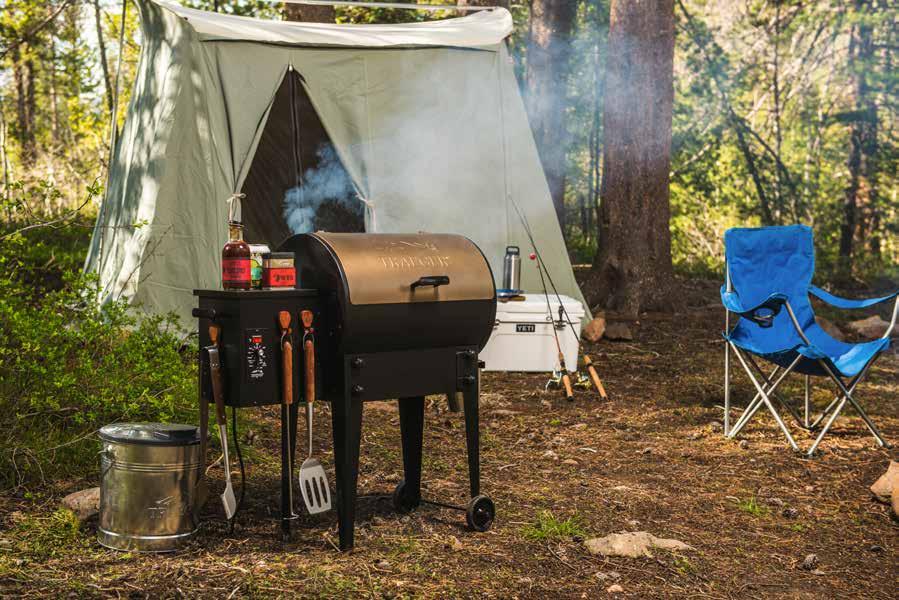



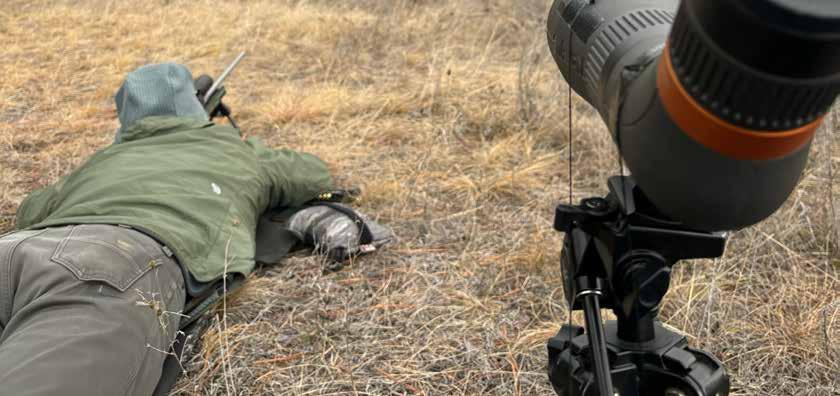
The midday point on the last day of elk season had passed uneventfully. Snow was falling faster, and the northerly wind bit at my cheeks. That morning I’d reluctantly crawled out of my sleeping bag and broken down the frozen teepee, pitched on a cold, dark north slope out of the brute force of the storm. Undermotivated by the lack of fresh elk sign I’d seen on the seven-mile hike in the day before, I began to hunt my way back toward the truck. My thoughts had long since turned to the lengthy walk out and hoping that my truck would both start and not be snowed in, when I rounded the corner of the old skid road and caught movement on the hillside above me.
The elk were skittish, whether the result of the swirling wind, five weeks of general season pressure or having recently been spooked over the mountain by another hunter. Maybe all of the above.
I ranged them at 230 yards and considered the wind gusting off my right shoulder as I dropped my pack onto the roadbed and crossed my trekking poles for a rest. From the seated position, I placed the rifle’s forestock into the V of the poles and worked to steady the scope on a cow standing broadside in a small opening between the brush.
The reticle danced all over the elk’s shoulder, then stomach, then over her spine and down under the brisket. I couldn’t get steady or comfortable while aiming uphill from the nearly level skid road. My neck was crammed awkwardly adjusting to the steep shot angle. I fiddled with the poles. I tried to lay prone behind the rifle. Kneeling was no good either. I didn’t know how much to hold for the wind. Didn’t know how much to adjust for the steep angle.
I worried about making a bad hit. Worried about tracking in the waning light and heavy snow. Worried that I was due home that evening and unable to return the next day. It was a conscious decision to let them go, and I felt OK with it.
The offseason brings plenty of time for reflection: the good moments and bad, the missed chances and the successes. But for me, the missed opportunities are replayed more frequently.
I never regretted or second-guessed not pressing that trigger. It was the correct decision in that moment. But over time, I also came to vow to not let it happen again.
I knew that I could have been successful if I’d only done one thing differently: practice.
Practice can be viewed a lot of ways. Teenage me sure hated it.
“We’re talking about practice – not a game. Practice. I mean … practice,” said Allen Iverson, much to my enjoyment.
But the adult version of me came to enjoy it. The opportunity for improvement. The chance to focus on the act and not the results. I became a student of my hobbies: fly casting, shooting my traditional bow. For some reason, it had never applied to the rifle, for which I took a zero the scope and hunt philosophy.
The missed opportunity at the elk, along with a couple of mule deer the year before (also resulting in an unfilled tag), changed that. I wanted to be better. I wanted to know with absolute confidence that I could ethically make challenging shots. I began not only practicing my shooting but reading up on proper form, ballistics and wind – learning the way of the rifle. What started as shooting at dots at the range transformed into shooting at steel plates and rocks in the mountains. I replayed missed opportunities, fired from difficult field positions, scoped myself more than anyone should care to admit.
Along the way, I was reminded of something: practice is fun. Not only is improving at a skill enjoyable, but the art of practice is also fun in and of itself. It requires a singular focus and a clear mind. I discovered that much of what I enjoy about hunting itself can be had 12 months a year: the opportunity to forget about the day-to-day, breathe fresh air and challenge my mind and body. It’s meditative.
And next time that steeply uphill shot presents itself, my reticle will be still – I’ll have made that shot a hundred times before.
Puzzlemaker is a -Zack Williams, editorCrossword
